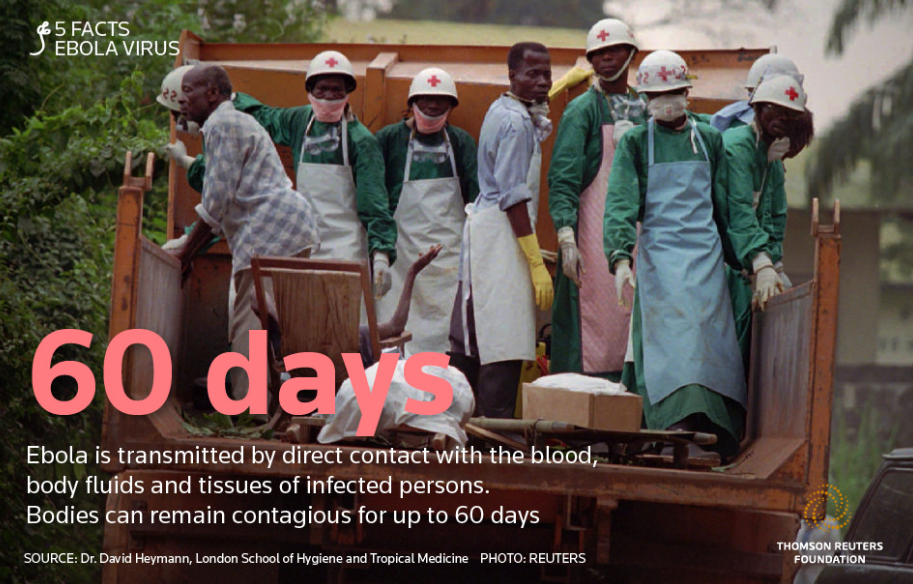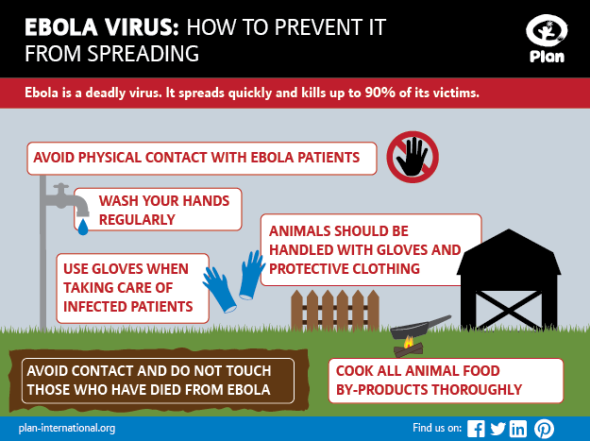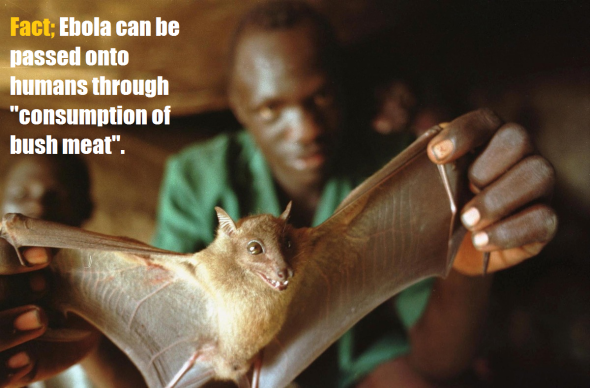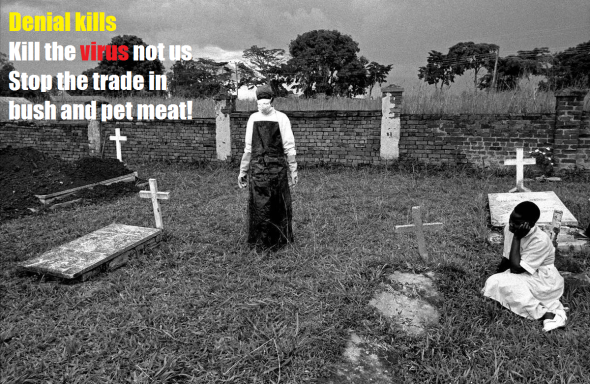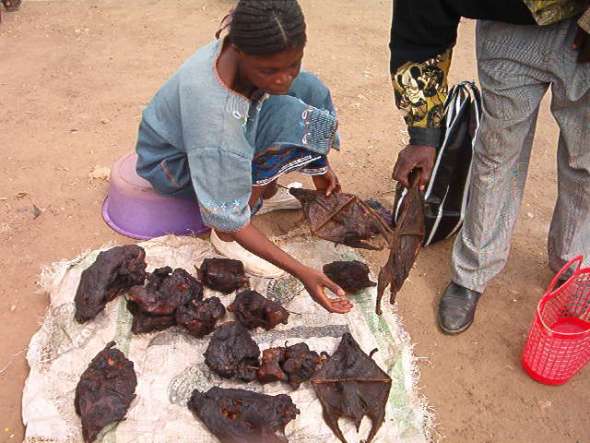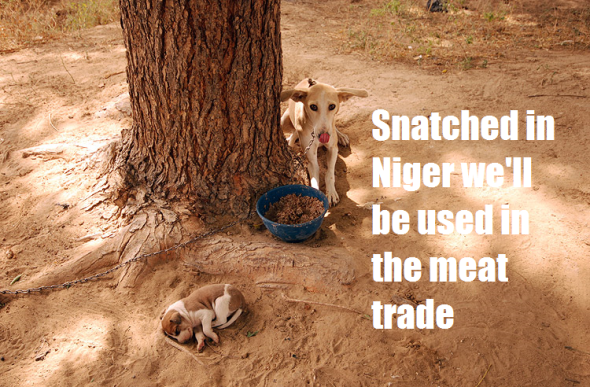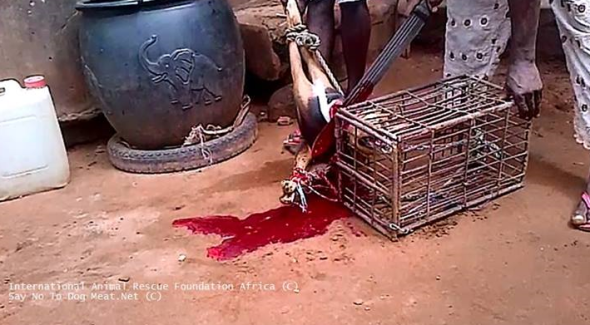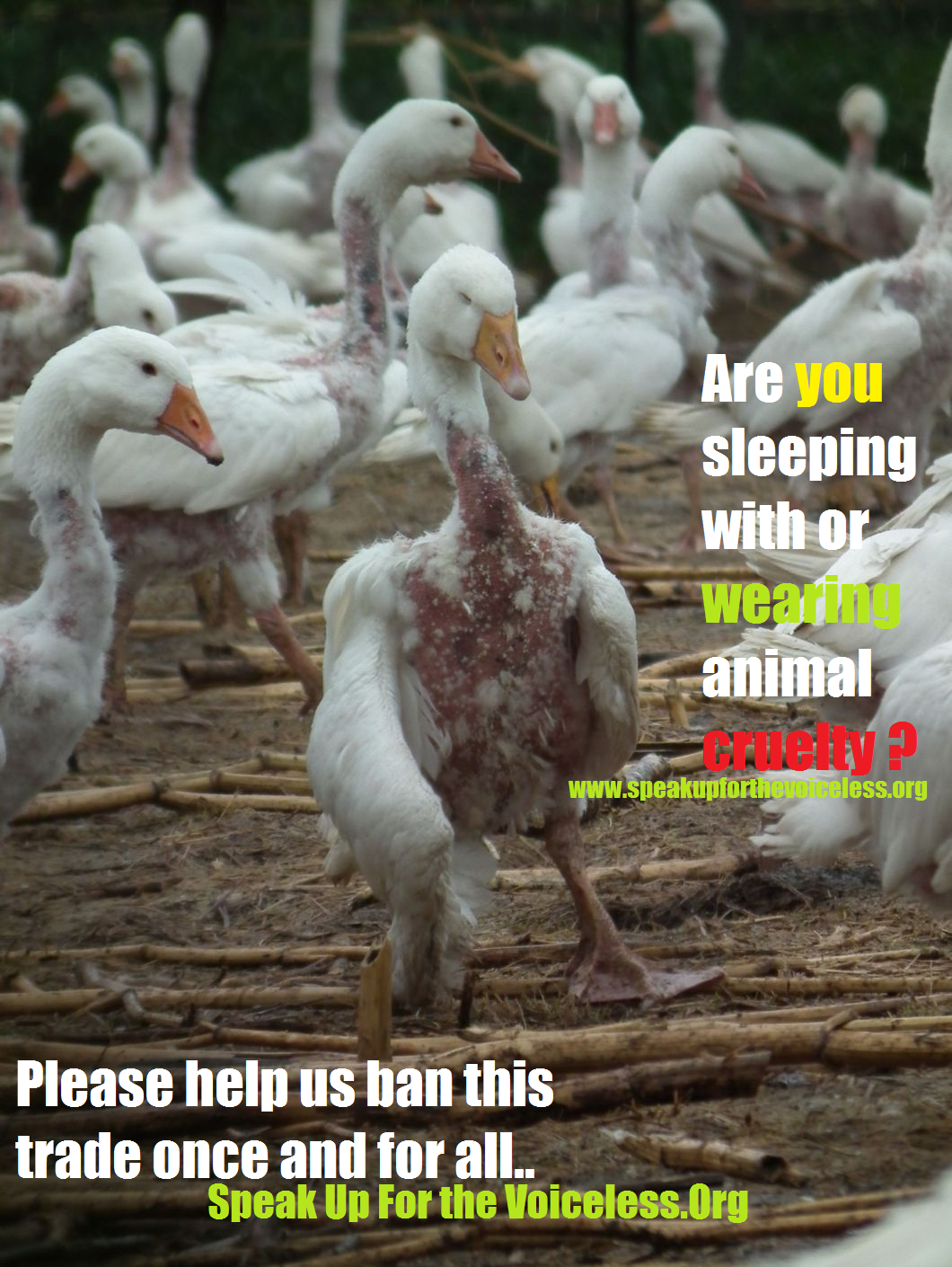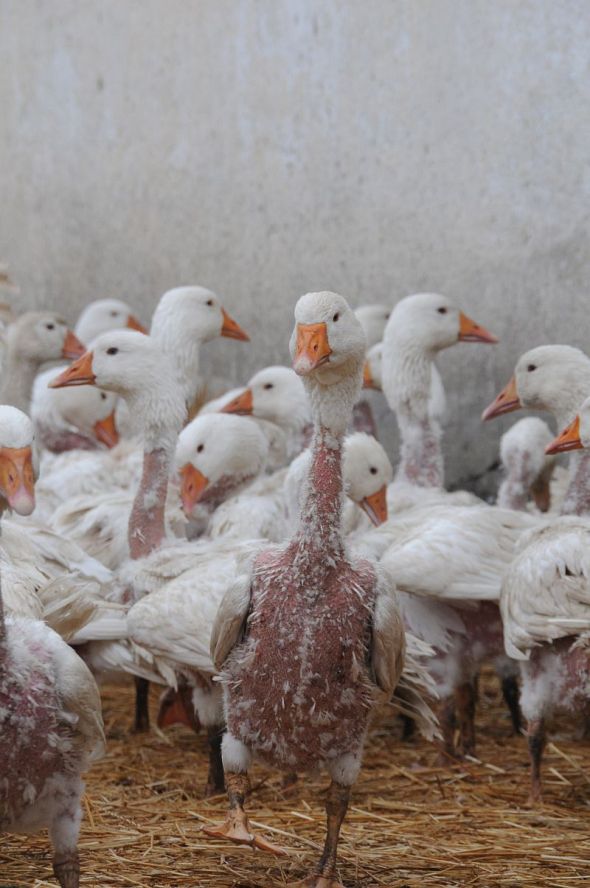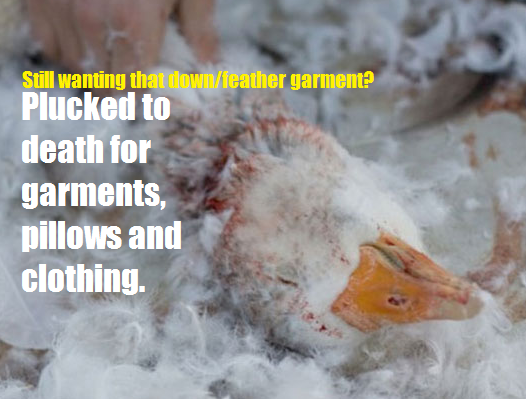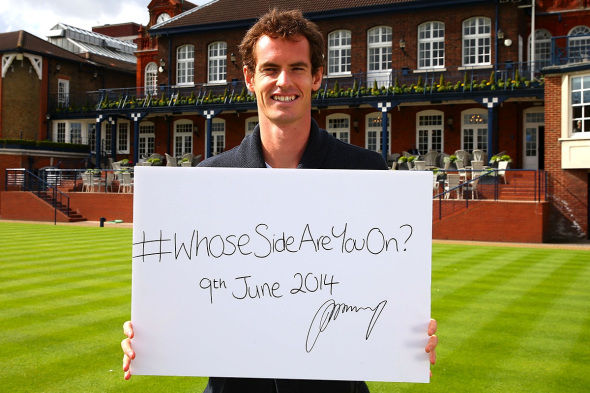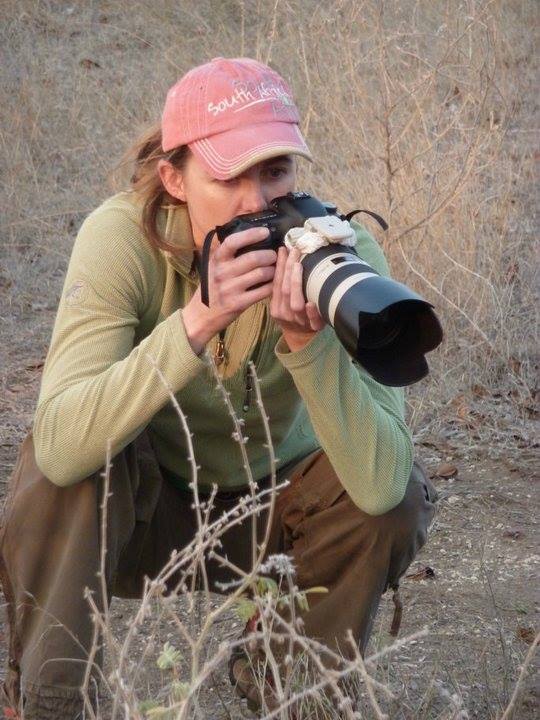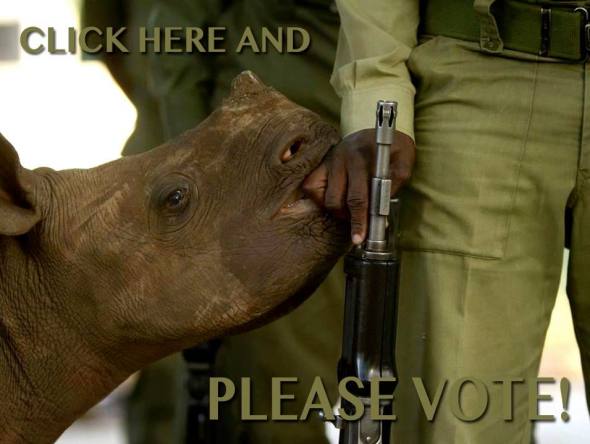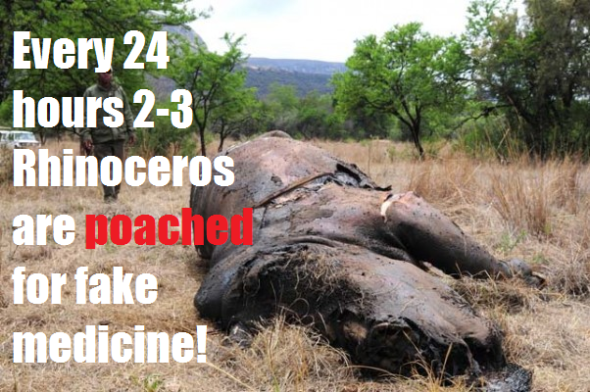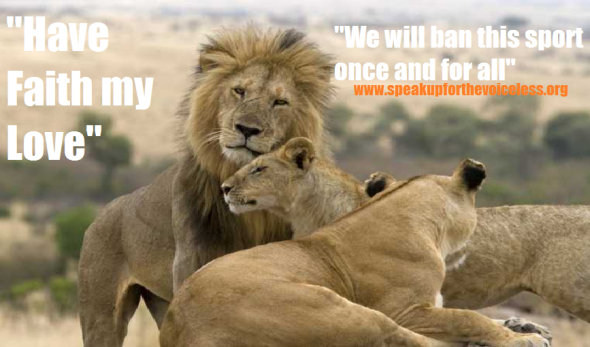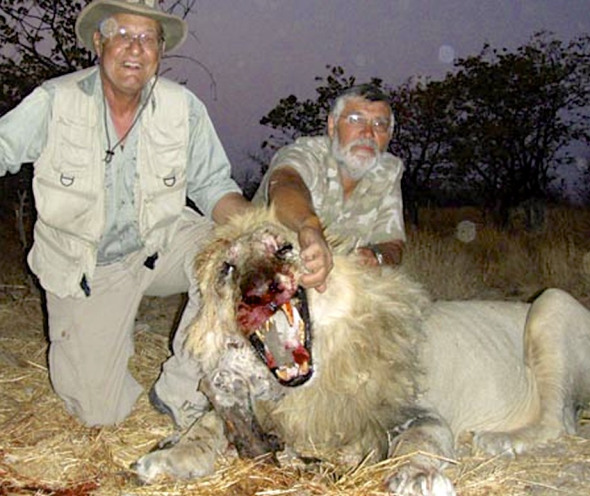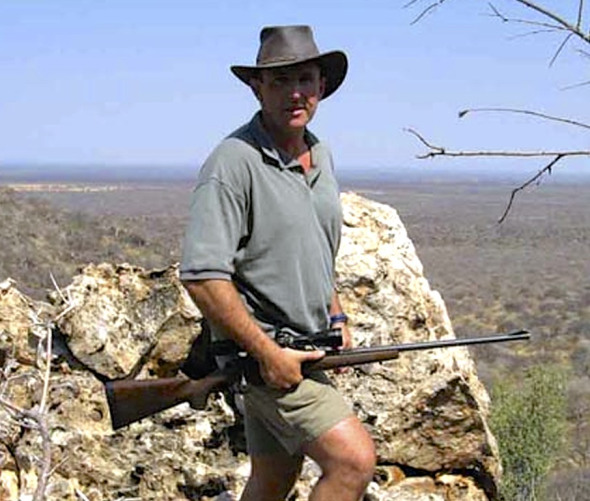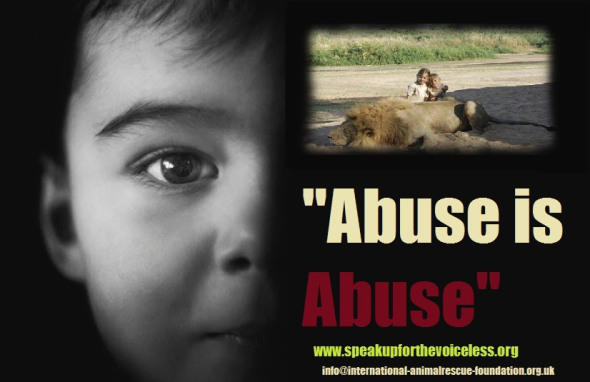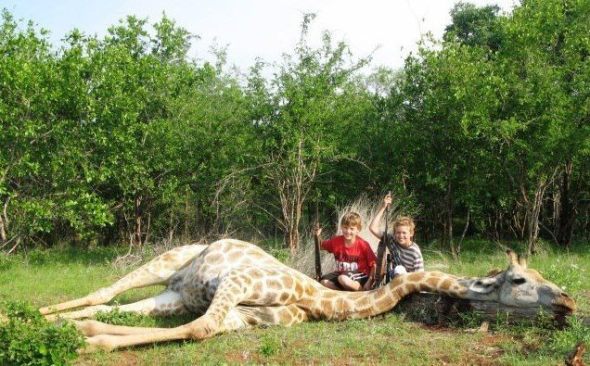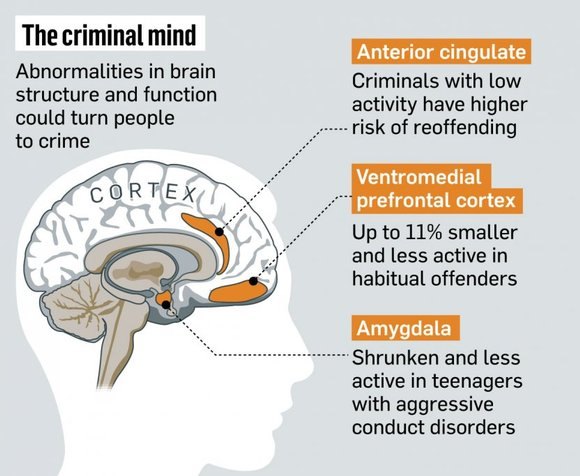Ebola - Global Threat? From the Third World to the Whole World
EBOLA has claimed the lives of some 645 people to-date which is an estimated number, there are still some 1,400 suspected cases (and rising) local to Liberia, Ghana, Sierra Leon and Guinea. One passenger that traveled from Liberia to Nigeria this Friday sadly died from the worlds most dangerous virus, two world health doctors and one nurse have also fallen ill with the highly infectious disease. Unfortunately the nurse that had been treating and helping victims has since died, mocked by her countries minister for having unsafe sex.
Today the British Government announced that one man in Birmingham that is suspected to have traveled from Liberia showed signs of Ebola Hemorrhagic Fever fortunately has since proved negative for mans deadliest virus. Great Britain will today issue its Cobra Meeting of which ministers, military commanders and doctors will be present to discuss and put into plan operations to help combat an Ebola outbreak. Although such a virus outbreak in Europe would be significantly small compared to West Africa the fact British Governmental Ministers have issued the Cobra Meeting of top brass clearly indicates to us that they have something to worry about.
What is Ebola?
Virus, Ebola: A notoriously deadly virus that causes fearsome symptoms, the most prominent being high fever and massive internal bleeding. Ebola virus kills as many as 90% of the people it infects. It is one of the viruses that is capable of causing hemorrhagic (bloody) fever.
Epidemics of Ebola virus have occurred mainly in African countries including Zaire (now the Democratic Republic of Congo), Gabon, Uganda, the Ivory Coast, and Sudan. Ebola virus is a hazard to laboratory workers and, for that matter, anyone who is exposed to it.
Infection with Ebola virus in humans is incidental — humans do not “carry” the virus. The way in which the virus first appears in a human at the start of an outbreak has not been determined. However, it has been hypothesized that the first patient (the index case) becomes infected through contact with an infected animal.
Ebola virus is transmitted by contact with blood, feces or body fluids from an infected person or by direct contact with the virus, as in a laboratory. People can be exposed to Ebola virus from direct contact with the blood or secretions of an infected person. This is why the virus has often been spread through the families and friends of infected persons: in the course of feeding, holding, or otherwise caring for them, family members and friends would come into close contact with such secretions. People can also be exposed to Ebola virus through contact with objects, such as needles, that have been contaminated with infected secretions.
The incubation period -the period between contact with the virus and the appearance of symptoms — ranges from 2 to 21 days.
The initial symptoms are usually high fever, headache, muscle aches, stomach pain, and diarrhea. There may also be sore throat, hiccups, and red and itchy eyes. The symptoms that tend to follow include vomiting and rash and bleeding problems with bloody nose (epistaxis), spitting up blood from the lungs (hemoptysis) and vomiting it up from the stomach (hematemesis), and bloody eyes (conjunctival hemorrhages). Then finally come chest pain, shock, and death.
A protein on the surface of the virus has been discovered that is responsible for the severe internal bleeding (the death-dealing feature of the disease). The protein attacks and destroys the endothelial cells lining blood vessels, causing the vessels to leak and bleed.
There is no specific treatment for the disease. Currently, patients receive supportive therapy. This consists of balancing the patient’s fluids and electrolytes, maintaining their oxygen level and blood pressure, and treating them for any complicating infections. Death can occur within 10 days of the onset of symptoms.
The prevention of the spread of Ebola fever involves practical viral hemorrhagic fever isolation precautions, or barrier nursing techniques. These techniques include the wearing of protective clothing, such as masks, gloves, gowns, and goggles; the use of infection-control measures, including complete equipment sterilization; and the isolation of Ebola fever patients from contact with unprotected persons. The aim of all of these techniques is to avoid any person’s contact with the blood or secretions of any patient. If a patient with Ebola fever dies, it is equally important that direct contact with the body of the deceased patient be prevented.
Bioterrorism — There has been concern about Ebola virus as a possible weapon for bioterrorism. However, the General Accounting Office, the investigative arm of the US Congress, in a 1999 report considered Ebola virus to be an “unlikely” biologic threat for terrorism, because the virus is very difficult to obtain and process, unsafe to handle, and relatively unstable.
International Animal Rescue Foundation Africa and their counterparts in Europe, France have been documenting on Ebola since the first outbreak in West Africa 2014 that is now known as the deadliest outbreak thus far. Hon Philip Hammond UK Foreign Secretary will later today BST time hosting the Cobra Committee that will discuss Ebola and what procedures need to be implemented should such a case of Ebola emerge within Great Britain. Few days ago a male in his mid forties began showing signs of Ebola infection however tests thankfully have proved negative. So we know the threat is real and the threat is there. (Click the link to view our Facebook site or contact us via our main communications site)
Dr Josa Depre stated at the start of 2014 when exposing the full scale of pet meat trade within West and North Africa that should Ebola or any virus emerge from the consumption of pet and bush meat the possibilities of “any” such virus emerging into a “super virus” is extremely high, problem is when will it happen. Depre continued that we do not have time to wait for “when it will happen” we must stop trade of bush and pet meat now before such a virus emerges wiping out a quarter of the worlds population.
BAD news is always interesting, especially when it starts small and threatens to grow large, like the little cloud on the distant horizon, no bigger than “a man’s hand,” that is destined to rise as a thunderhead (1 Kings 18:44). That’s why we read so avidly about the recent outbreaks of Ebola virus disease among villages in Uganda and the Democratic Republic of Congo, and about West Nile fever in the area around Dallas (where 15 have died of it since July). And that’s why, early this month, heads turned toward Yosemite National Park after the announcement of a third death from hantavirus pulmonary syndrome among recent visitors there.
Humans die in large numbers every day, every hour, from heart failure and automobile crashes and the dreary effects of poverty; but strange new infectious diseases, even when the death tolls are low, call up a more urgent sort of attention. Why?
There’s a tangle of reasons, no doubt, but one is obvious: whenever an outbreak occurs, we all ask ourselves whether it might herald the Next Big One.
What I mean by the Next Big One is a pandemic of some newly emerging or re-emerging infectious disease, a global health catastrophe in which millions die. The influenza epidemic of 1918-19 was a big one, killing about 50 million people worldwide. The Hong Kong flu of 1968-69 was biggish, causing at least a million deaths. AIDS has killed some 30 million and counting. Scientists who study this subject — virologists, molecular geneticists, epidemiologists, disease ecologists — stress its complexity but tend to agree on a few points.
Yes, there probably will be a Next Big One, they say. It will most likely be caused by a virus, not by a bacterium or some other kind of bug. More specifically, we should expect an RNA virus (specifically, one that bears its genome as a single molecular strand), as distinct from a DNA virus (carrying its info on the reliable double helix, less prone to mutation, therefore less variable and adaptable). Finally, this RNA virus will almost certainly be zoonotic — a pathogen that emerges from some nonhuman animal to infect, and spread among, human beings.
The influenzas are zoonoses. They emerge from wild aquatic birds, sometimes with a pig as an intermediary host on the way to humanity. AIDS is a zoonosis; the pandemic strain of H.I.V. emerged about a century ago from a single Cameroonian chimpanzee. Ebola is a zoonosis. The Ebola viruses (there are five known species) abide inconspicuously in some as yet unidentified creature or creatures native to Central African forests, spilling over occasionally to kill gorillas and chimps and people. SARS is a zoonosis that emerged from a Chinese bat, fanned out of Hong Kong to the wider world, threatened to be the Next Big One, and then was stopped — barely — by fast and excellent medical science.
And the hantaviruses, of which there are many known species (Andes virus, Black Creek Canal virus, Muleshoe virus, Seoul virus, Puumala virus and dozens more), come out of rodents. The species of hantavirus at large in Yosemite is called Sin Nombre — “nameless” — virus, and is the same one that erupted famously, and lethally, at the Four Corners in 1993. Its primary host is the deer mouse, one of the most widely distributed and abundant vertebrates in North America. The virus makes its way from dried mouse urine or feces into airborne dust, and from airborne dust into human lungs. If that happens to you, you’re in trouble. There’s no treatment, and the fatality rate for hantavirus pulmonary syndrome, the infection in severe form, runs at about 40 percent.
You don’t have to go to Yosemite and sleep in a dusty cabin to put yourself close to a hantavirus. Although one expert, recently quoted by Scientific American, called it a “very rare” kind of virus, that view doesn’t square with the studies I’ve read or the testimony of hantavirus researchers I’ve interviewed. The virus seems to be relatively common, at least among deer mice. A 2008 study done at Tuolumne Meadows in Yosemite found that 24 percent of local deer mice had the antibody for the virus, signaling a past or current infection. One mouse in four is worryingly high. Among these mouse populations nationwide, the prevalence of the antibody seems to vary from as low as zero to as high as 49 percent, or one in two mice.
The question this raises is: Why aren’t more people dying from Sin Nombre virus? The answer seems to be that, although very dangerous when caught, it’s not easy to catch, despite its presence in mouse-infested sheds and trailers and garages and barns across much of America. This is because it doesn’t pass from person to person — only from mouse to mouse, and from mouse excretions to one unlucky person or another, each of whom represents a dead-end host. (The “dead” of that “dead-end” may be figurative or literal.) It’s not a “very rare” virus; it’s a common virus known only rarely to infect humans, and with no ramifying chains of human contagion. So the Next Big One is not likely to be Sin Nombre.
Nor is it likely to be Ebola, which is transmissible from human to human through direct contact with bodily fluids, but can be stopped by preventing such contact. Furthermore, Ebola burns so hotly in its victims, incapacitating and killing so quickly, that it is poorly adapted to achieve global dispersal. Only one human has ever been known to leave Africa with a rampant Ebola virus infection — and that was a Swiss woman, evacuated in 1994 to a hospital in Basel. If you want to be grateful for something today, be grateful for that: Ebola doesn’t fly.
WE should recognize such blessings, and try to focus our deepest concerns on real global dangers. Too often, we’re distracted from good scientific information by yellow journalism and the frisson of melodrama. Ebola is charismatic, the demon that people love to fear. Other lurid candidates, like hantavirus and SARS, also get their share of headlines. When you mention emerging diseases, people’s responses tend to fall at the two ends of a spectrum. Some folks are mesmerized by the dark possibilities and the garish but unrepresentative cases. Others are dismissive, rolling their eyes at the prospect of having to contemplate still another category of dire monition. They want you to cut to the chase. “Are we all gonna die?” they ask. Or they say: “Fine, so what can we do about these bugs?”
Yes, we are all going to die, though most of us not from a strange disease newly emerged from a mouse or a chimp. And there are things we can do: get a flu vaccination; support calls for research; avoid coughing people on airplanes; apply mosquito repellent; wear a mask when you sweep out your old shed; don’t eat any chimpanzee meat from an animal found dead in the forest. But the concrete measures are limited by time, place and circumstance. The broader response is more basic: learn, absorb, understand. Don’t start trying to apply your knowledge until you have some.
Among the other unsettling disease news this summer, you’ve probably seen mention of influenza, that old familiar zoonosis, quite capable of devastation and melodrama all its own. Yes, there’s a new flu bug, a nasty variant of the H1N2 strain, suspected now to be traveling through pigs at state fairs. The influenzas are protean and explosive. Keep your eyes on that one.
Hantavirus in Yosemite is a little cloud that seems likely to stay little. This doesn’t mean that the great dark thunderhead isn’t coming. It just speaks to the need for a bit of informed judgment about which sector of the horizon we should watch..
Should a super virus mutation emerge from such species of animals then mass loss of life will be lost. Spanish influenza killed thousands and thousands of people. If such a virus can kill in this manner so can new mutations of Ebola.
Whilst International Animal Rescue Foundation Africa is lobbying for new laws to be implemented to ban pet meat trade within West, North and Central Africa it must be noted that pet meat hosts only a small danger to the public simply because bush meat is considered more a staple diet rather than pet meat which is usually eaten by men rather than women.
Ebola may be present in more animals than previously thought, according to researchers studying the deadly virus, which has already been detected in chimpanzees, gorillas, fruit bats, monkeys, antelopes, porcupines, rodents, dogs, pigs and humans. The close evolutionary relationship between humans, chimpanzees and gorillas makes their immune systems very similar which is of some concern to us.
In general, Ebola researchers think that the natural host of Ebola virus are fruit bats, and that the virus is transmitted to non-human primates and then to humans through the bush meat trade. It is possible that there is direct transmission from fruit bats to humans.
Certain cultures in Africa do consume bat meat, such that Guinea earlier this year ordered a ban on consumption of these flying mammals in an effort to halt the epidemic’s spread. As for how non-human primates might become infected, they often feast on fruits that the bats eat. They can also kill and eat bats, or scavenge meat from infected carcasses.
Then the question remains: How did bats get the virus?
During the deadly Ebola outbreak in Gabon 2001-2002 scientists observed very worrying signs of Ebola virus in dogs too. International Animal Rescue Foundation Africa has documented heavily on the major pet meat consuming countries being that of Liberia, Sierra Leon, Guinea and Ghana. Coincidentally these four African countries are all now experiencing large outbreaks of the Ebola virus. However as explained we must not just blame the pet meat trade here. There are many factors that is not only increasing the virus but spreading too. Poor hygiene, sanitation, denial the virus even exists is common among many West Africans, trading still of bush meat, poverty and handling of the dead that have sadly died from Ebola Hemorrhagic Fever. These being some of the most common issues that are increasing more cases of Ebola emerging.
Scientists observed that several dogs were highly exposed to Ebola virus by eating infected dead animals. To examine whether these animals became infected with Ebola virus, they sampled 439 dogs and screened them by Ebola virus-specific immunoglobulin (Ig) G assay, antigen detection, and viral polymerase chain reaction amplification. Seven (8.9%) of 79 samples from the 2 main towns, 15 (15.2%) of 99 samples from Mekambo, and 40 (25.2%) of 159 samples from villages in the Ebola virus-epidemic area had detectable Ebola virus-IgG, compared to only 2 (2%) of 102 samples from France. Among dogs from villages with both infected animal carcasses and human cases, seroprevalence was 31.8%. A significant positive direct association existed between seroprevalence and the distances to the Ebola virus-epidemic area. This study suggests that dogs can be infected by Ebola virus and that the putative infection is asymptomatic.
Death from denial - Please view the video below;
Ebola virus antibodies were detected in dogs exposed to the virus during the latest epidemics, which suggests that these animals may well have been infected and can therefore be a new source of transmission to humans. Ebola virus infection in humans provokes a violent haemorrhagic fever. It usually flares up as intense epidemics. These kill 80 % of the people infected. Seven such outbreaks have hit Gabon and the Republic of Congo since 1994, leading to 445 cases resulting in 361 deaths. Ebola virus thus constitutes a grave public health problem in these countries. No medicine or vaccine is currently available, only prevention and rapid control of epidemics by isolation of disease victims can limit its spreading.
Moreover, during the latest epidemics in Gabon and the Republic of Congo, there were many cases where dogs had eaten remains of dead animals infected with the virus, nonetheless without showing visible clinical signs. In order to confirm that these dogs had indeed come into contact with the virus, the scientists looked for the presence of specific Ebola virus antibodies in their blood. The percentage of dogs carrying such antibodies increases linearly and significantly the closer they are found to foci of the outbreaks. From 9 % in the two large cities of Gabon, antibody prevalence goes up to 25 % in the untouched villages of the epidemic area, reaching 32 % in the villages where human cases have been attributed to an infected-animal source. These domestic animals could therefore become infected and excrete virus over a given period, thus becoming a potential source of infection for humans. This could explain certain as yet un-elucidated human infections. It now appears necessary to assess the role of dogs in Ebola fever outbreaks and take this risk into account in epidemic-control measures. These animals could furthermore be used as indicators of the presence of the virus in the regions where, besides the appearance of cases of both animal and human deaths, there is no external sign as to whether or not Ebola virus is present.
What is most concerning here is that while many animal hosts show signs of “Ebola” dogs do not which poses an ever more larger threat to humans that are trading dogs in countries such as Liberia and Nigeria. Picture below is that of a dog meat meat market in Nigeria. As one can clearly see here there are many ways in which if that dog did have Ebola could quite easily pass the virus onto the slaughter-men. Skin is exposed, dog is being mishandled and could quite easily pass on via saliva through a broken skin wound deadly Ebola virus. Even more concerning blood hemorrhaging from the cut to the dogs throat can very easily “if” infected with Ebola virus could be passed onto both men should there be an open skin wound, or if hands that come into contact with blood then touch mouths or noses. No masks or protective clothing is being worn as one would see in a slaughterhouse - splattering of blood directly into the face also poses an incredibly high risk of secondary cross infection. From there the virus then takes over the body in under 2-21 says being the incubation period. During that time and if the dog was infected both men that “for example” had been infected would have come into contact with others. Poor sanitation, hygiene, non-safe sexual intercourse and not washing hands after using the bathroom are all major factors of viral contamination passed onto other humans.
Pictured above is also yet another classic sign of a Nigerian dog meat market. Again poor hygiene is seen and not being practiced, the slaughter man is seen holding the dogs mouth of which the dog could harbor both rabies and Ebola. Should saliva from the dog be passed onto the mans hand then “cross contamination” has occurred. Man then touches his mouth or places his fingers into his mouth thus passing on virus. Furthermore as explained above too should the slaughter-man have exposed cuts or abrasions on his feet then splattering of blood again poses a “high risk” of passing on any virus.
How is Ebola passed onto humans from animals?
The virus is transmitted through direct contact with blood or other body fluids of infected persons or animals, including close contact with deceased Ebola-infected patients.
Ebola a risk to non-African countries?
PLEASE read the information below carefully and please also undertake your own research.
As of today 30th July 2014 the British Government has since launched the Emergency Cobra Committee of which is one of the highest military, health and ministerial meetings within the country. Contingency plans are now being implemented of which all British and now in the last few minutes all European doctors, nurses and border officers are now on full alert with regards to the dangerous risks Ebola poses. While media and the British government have stated there are no direct flights from the “infected zones” directly into the UK there are flights to and from other countries that travel into the UK of which “suspected sufferers” could travel on. Its very irresponsible for the British media and experts to state that just because there are no direct flights from West Africa into Great Britain then risk is minimal. Please view the photo below that depicts a booking our investigative team made from Ghana to London.
The pictures above depicts screenshots that clearly shows how easy it is for anyone within the “infected zones” could very easily travel from West Africa into London. Just because there is no flights directly from (Liberia) doesn’t mean for one single minute that passengers travelling over the border from the Liberia into Ghana can then connect to a direct flight to London from Ghana, Ghana is an infected zone.
In a Facebook response to a question about the country’s preparedness for a possible outbreak, Dr Bampoe said “Yes, Ebola is in the sub-region - the worst outbreak ever, but the Ghana Health Service is well prepared to deal with any case that occurs. There is a misconception that every single health facility in every single district in every single region should have a standing isolation ward, etc. that is neither practical nor feasible”.
He explained “The epidemiology of the disease has changed, and so if we’re going to get a case in Ghana, it will likely be someone traveling from the sub-region. What has been done so far, and what needs to be done?”
“The GHS is working with National Security and the Border agencies to screen people from areas in the sub-region with to spot suspected cases 2. Messages from the Health Service are going out with periodic updates to let people know how to spot suspected cases, who to report them to, how to, avoid getting infected, etc. Much more needs to be done and will be done in this area 3. Each region has been given an allocation of protective equipment that can be rapidly deployed when there is a suspected case. Even before that, health workers are being trained to identify suspected cases and apply barrier nursing” methods, even before the protective equipment are sent,” he disclosed.
Oddly the media has only just reported on this case below 27th July 2014, yet in Ghana the case was reported on the 6th then published in the 7th July 2014.
An American (name withheld) has been quarantined at the Nyaho clinic in Accra for a suspected Ebola case.
City News sources at the Health Ministry say the American who reported at the hospital with fever had previously visited Guinea and Sierra Leone. Hundreds of people have been affected and several others killed by the deadly disease in these two countries.
The Health Ministry in a statement said “the suspected fever case recorded at the Nyaho Clinic has not been confirmed yet by Noguchi Memorial Research Centre”. It further stated that: “the Ministry has put in place every precautionary measure at that clinic, including additional support of Public Health staff from the Ministry, directive to quarantine patient and clinical staff, supply of protective gowns for the staff of that hospital”.
It urged the general public to remain calm as it awaits the results from the blood sample taken for test, insisting that it has the situation under control. Last week, health ministers from all West African countries met in Accra to find ways to stop the disease from spreading. (Since reporting the American has sadly since died) we believe this individual to be a health worker however are very suspicious as to why no name has been issued or other details.
The medical director of Public Health England said it was “unlikely but not impossible” that travellers infected in West Africa could develop symptoms on their return. According to Dr Ben Neuman, a virologist at Reading University, the chance of the virus spreading in the UK was “very, very small”.
He said border staff are already trained to deal with illnesses of this kind, and anyone showing signs of fever from an outbreak area would be stopped, quarantined and treated in containment facilities if the infection were confirmed.
He said the virus itself is “delicate and inefficient - you have to pick it up from bodily fluids”. But he said it was sensible to be prepared, given the situation in West Africa.
While the medical director of Public Health England has stated the risk is “very, very, small” the risk is still there. Anyone travelling from West African directly into the UK or America that are not actually showing any signs of Ebola can infect passengers on the place via fecal transmission within toilet cubicles, vomiting on the plane of which passes bodily fluids onto others. International Animal Rescue Foundation Africa has requested the British Border Agency and airway companies that are ferrying passengers from West Africa into Europe to now implement a temporary ban with immediate affect. As explained while there is a small risk the risk is still there and we cannot take any risks or slip up.
Since 1976 there has been no confirmed cases of Ebola Hemorrhagic Fever ever confirmed within Great Britain. Today’s case was fortunately negative but how many cases has there been recorded since the worlds deadliest virus emerged? See information below.
Ebola Hemorrhagic Fever deaths to date are reported below. Why has the number of cases jumped sporadically since 1976 to 2014?
- Zaire 1976 = 280 deaths
- Sudan 1976 = 151 deaths
- Zaire 1977 = 1 death
- Sudan 1979 = 22 deaths
- USA 1990 = 4 cases = no deaths
- Philippines 1990 = 3 cases = no deaths
- Gabon 1994 = 31 deaths
- Ivory Coast = 1 case = no deaths
- Democratic Republic of Congo 1995 = 250 deaths
- Gabon 1996 = 21 deaths
- Gabon 1997 = 45 deaths
- South Africa 1996 - 97 = 1 death
- Uganda 2001 = 224 deaths
- Gabon 2002 = 53 deaths
- Republic of Congo 2002 = 43 deaths
- Republic of Congo 2003 = 128 deaths
- Republic of Congo (Nov-Dec) = 29 deaths
- Sudan 2004 = 7 deaths
- Democratic Republic of Congo 2007 = 187 deaths
- Uganda 2008 = 37 deaths
- Philippines 2008 = 6 cases = no deaths
- Democratic of Congo 2009 = 14 deaths
- Uganda 2012 = 17 deaths
- Democratic Republic of Congo 2012 = 36 deaths
- Guinea, Liberia, Sierra Leone, Nigeria = estimated total under 670 deaths and rising
- Great Britain 2014 = 1 suspected case = negative - no deaths
There has been some speculation as to why the number of cases of Ebola virus has increased from 1970 to 2014;
- Human over population is increasing which in turn reduces land mass that can be used for sustainable agriculture.
- Climate change has affected many African countries of which see’s crop reduction and cattle death due to lack of rain fall and suitable climatic conditions suitable to sustain a healthy non-bush meat diet.
- Wildlife has taken a drastic decline within West Africa - one prime example of this is Liberia where many species of old and new primates, mammals and birds are declining. Whilst these species of animals are used in the trade of bush meat with very few species remaining pet meat is the only readily solution to halt starvation and malnutrition.
- Civil war in Sierra Leone and Liberia has left the two countries tarnished with many people living in poverty and illiterate. Starvation is common and while many people remain impoverished the only suitable meats to them are cheap pet meat or dead carrion laying on the forest floor. Many people within West Africa are illiterate so simple education and awareness of such unhealthy eating and the dangers surrounding pet and bush meat trade is easier said than understood.
- Witchcraft and traditional black medicine is cheap and seen as more healthier alternative to synthetic medications. While many people in West Africa believe such traditions actually decrease highly infectious diseases and virus fact is there is no clinical evidence whatsoever to prove such traditions actually benefit humans.
- Denial and lack of education has played quite a pivotal role in allowing Ebola in this case to increase killing over 650 victims. Many West African citizens do not believe Ebola actually exists and that their government are trying to scare monger international agencies into sending more funding to them of which is a myth. With lack of funding there comes lack of education - International Animal Rescue Foundation Africa are now helping to fund school classes in West Africa on the dangers of Ebola, SARS, H1N1 and rabies.
- Lack of employment has driven many West Africans to trade in pet and bush meat regardless of the dangers it poses. Liberia and Ghana has banned the bush meat and pet meat trade however locals cannot survive without an income so therefore trade has continued.
- Increased handling of infected chimpanzees, gorillas, fruit bats, monkeys, forest antelope and porcupines found ill or dead or in the rainforest.
Josa Depre when questioned yesterday stated the following;
AS WE live in an interconnected world–and not just by the internet- we have to come to grips with the fact that hopping on a plane may potentially spread any virus–not just Ebola–to another country. Thus, the importance of enforcing proper infectious screening procedures of those who plan to board an aircraft in an endemic area such as West Africa becomes critical to containing the spread of the Ebola virus. Enforcing a “Do Not Board List” would be critical to preventing any spread of such a virus. Still noo such (DNB) has been issued and for all we know an Ebola carrier could be living next door to us, sitting on the same plane as anyone of us, on the same train as us that has left the infected zone to visit relatives or conduct business.
AND NO this is not a black persons illness. Just because the virus is rife in West Africa doesn’t mean for one minute that white people cannot become infected too. This is a myth that carries with it much racial hatred too. Josa Depre stated “Anyone can catch Ebola, you do not have to consume dog, cat or even eat bush meat, you could accidentally come into contact with an infected persons bodily fluid by any-means”. “That infected person may also not have consumed the later but actually be present at the death of a loved one, tending their bodies, or have accidentally come into contact with a dog from licking of ones face, dogs are known to scavenge on the forest floor for carrion, then travelling back into the community is a death sentence in itself”. “This is the problem we are facing in West Africa and until those over the borders in other countries start pulling their weight and helping in anyway possible were going to see more mass deaths, more infected people, more mass panic we could even see people migrating from the infected zones into Southern Africa where tourists flock in their thousands”, “It may already be happening, we cannot control people from moving out, borders are unmanned, What do we do, we need help” stated the Chief Executive Officer.
WHILE the Ebola virus could potentially be transported by travelers to another country by a plane ride, according to officials at the CDC, the actual chance of this developing into a serious public health risk to those living in the US is small. The reason for this is due to good professional health practices and experience in containing highly contagious infectious diseases. Josa stated though “Public and governments could be caught unaware” “For instance if person A carrying the virus from (day 2-21) traveled to America from Liberia infected person B travelling to Minnesota then person B will then carry while in the incubation period (showing little or no signs of infection) Ebola virus to person C,D,E and F” “While still in the incubation period what if persons C,D,E and more that had contracted the virus then go on to travel further or infect those in the work place” “Could health organisations quickly trace and confine such a disease?” The answer to that question can only be answered when and if the virus hits (which we hope doesn’t).
ONE of the main reasons, officials believe, that the virus has a low public health risk is related to the conditions which would be favorable to allow spread of the virus. Poor and crowded living conditions, along with improper sanitation seem to be an important element that contribute to the spread of the virus. Such are not the living conditions, in general, throughout most modernized countries in the Western world. Health officials seem to be forgetting something though, the poor, elderly, those living in slums, schools and high crowded public areas. “It takes just one person to infect 2 then 4 then 8 then we have major problems, THE manner in which this virus spreads is no different to that of highly contagious virus’s that are spread by direct or indirect contact stated Josa Depre”. Public areas such as schools, bars, work places and more are “high risk”. Good sanitation means nothing when the virus IF the virus has entered then been passed on - We must be vigilant and ready stated Depre.
For now the only “real” threat as stated by health officials is that of infected persons travelling on flights to and from Africa. However as explained infected people within the first stages of incubation show signs not even typical of Ebola virus. Minor fever, restlessness, some nausea and diarrhea, headache and tiredness can easily be mistaken as a mere common cold. While travel agencies and flight crew have to keep to strict time schedules and still undertake their daily routine jobs its very easy for anyone to pass by border or cabin crew thus then placing others in danger. We’ve already seen two such cases this month although one in Nigeria was positive in the United Kingdom, Birmingham this proved negative. It clearly shows though how easily these two individuals have passed by on planes, gone unchecked by border and airway crew even though Ebola virus has been ravaging West Africa for the past three months. How many more cases are there out there that we do not know of?
International Animal Rescue Foundation Africa believes now that West Africa must impose a complete travel ban on all citizens within the infected zones and all international countries to now ban those from travelling via West Africa into international waters regardless to whether the risks are very, very small. As soon as we let our guard down we become the victims.
There is no cure for Ebola virus disease, no established drug therapy to treat Ebola infection, and no vaccine that can protect humans against Ebola. Scientists lack sufficient diagnostic tools to rapidly identify Ebola infections. Scientists also need a more thorough understanding about how the virus is transmitted and how it causes disease. Ebola is a threat not only to humans but also to our closest living relatives - the great apes. The western lowland gorilla populations have been decimated by Ebola to such an extent that they are now considered “critically endangered”. About a third of the gorillas in protected areas have died from Ebola in the past 15 years. Scientists are concerned that their numbers may not be able to recover and fear that they could become extinct in as soon as a decade.
In addition to being classified as a potential bioterrorism agent, the risk of continued natural outbreaks or the further emergence of Ebola is a serious concern. As the human population grows, human contact with bats or Ebola-infected non-human primates increases. The discovery of the Reston subtype of Ebola virus in pigs introduces the additional possibility of transfer of Ebola virus to humans from pigs. Although the Reston subtype has not caused illness in humans to date, it is possible that the virus could become more dangerous after passage through pigs because they are ideal hosts in which viruses can mix and mutate.
Thank you for reading;
Chief Executive Officer Europe
DONATE HERE or via our communications site HERE
Thank you. Your donation large or small is used to help dogs and cats in the meat trade, rabies awareness and education, reduce dog bites, vaccination spay and neuter. Furthermore any donation is much appreciated that also travels directly to our FAWS project to help reduce anti-poaching, purchase much needed Anti Poaching equipment and to help the many orphaned wild animals caught up in horrifying wildlife trade. For more information please contact us below.
Contact us HERE
Rhino War and Photography
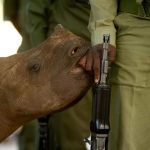
Rhino poaching within Africa has reached yet again an all time new high with a total of some 543 Rhinoceros poached dead for Traditional Chinese Medicine. Even with vast awareness campaigns, increased border patrols, upping Anti Poaching and funding the killing continues. Will it ever end? how long is a piece of string?
From the 30th June 2014 the (DEA) Department Of Environmental Affairs (South Africa) issued their Rhino poaching statistics of which was then 496. Since then a further 50+ have been bludgeoned leaving many people feeling hopeless, let down by their government, and debating on whether it is really a practical choice to support a trade in Rhino horn.
Poaching statistics for 2014 have again beaten records for the years 2010-2011. For both years, poaching statistics for 2010 were 333 poached Rhino and for the year 2011 we saw a total kill rate of 448. Poaching statistics for 2012 look as if they are most likely going to be beaten by this years June-July figures too that saw a total of 668 Rhinoceros poached in cold blood.
On a positive note arrest rates are also allegedly increasing from last year that saw a sky-rocketing 1003 Rhinoceros poached. Increased arrest rates doesn’t necessarily mean we are winning the battle, it merely shows that more and more poachers are encroaching from over the border into South Africa. 2010 saw a total of 165 poachers arrested, 2011 - 232, then in 2012 a total of 267 poachers were arrested, 2013 arrest rates shot up of which a total of 343 Rhino poachers were arrested. For June-July 2014 a total (estimate) arrest rate sees some 141 arrested. So 1148 poachers have been arrested yet we have only seen a handful of these poachers actually charged, brought to justice and convicted.
Its hard to actually believe too that Rhino horn made up of almost the same identical properties as human hair, finger nails, horse hoof, and parrot beak is selling illegally on the black market for a whopping $65,000kg whereas gold sells for a mere $43,000 kg and cocaine illegally trading at some $20,000 kg. Demand is not decreasing and while demand increases so will poaching and as explained there seems to be no end of the onslaught insight.
A powder made from the horns is prescribed in traditional Chinese medicine to cure fever and convulsions, but the substance is now used as a status symbol and a very expensive way for affluent Vietnamese to cure hangovers or, supposedly, to get high—even though the horns are composed of the common material keratin and have about the same psychoactive effects as snorting a fingernail clipping.
By weight, the horns go for anywhere from $60,000 to $100,000 per kilogram—single horns are about 3.5 kg, on average—making the substance significantly more pricey than other ubiquitous status symbols and intoxicants. Indian Rhino horns are still the most sought after and pricer too. International Animal Rescue Foundation Africa spoke with their Indian counterparts of which confirmed Indian Rhino horn is illegally trading for $80,000 kg. The reason for such high price is mainly due to the Indian Rhino’s endangered status. South Africa is home to about 75% of the world’s 29,000 rhinoceroses, but if the country can’t stop the poaching, it may lose that status, said Naomi Doak of the wildlife monitoring network, Traffic. “We are going to reach the tipping point for rhinos,” she told the BBC. “By the end of 2014, we’re starting to be in the negative in terms of deaths and poaching outstripping birth, and the population will start to decline very quickly.”
Trade in Rhino horn is outlawed by the United Nations Convention on International Trade in Endangered Species, but some argue that the best way to undercut black market horn trade is to give it competition in the form of a well-regulated, cheap and legal market for cultivated horns. Rhino horns can be removed harmlessly and regrow—so legalizing the trade could facilitate horn farming that doesn’t harm the animals. Others argue that such an option would encourage misconceptions about the medicinal properties of ingesting the horn and overwhelm the market with demand, allowing poachers to simply coexist with legal trade.
The South African government acknowledges that something has to change. The country’s minister of environmental affairs, Edna Molewa, said that government officials have been meeting to consider “a proposal for the legalization of commercial international trade” to be brought up at the next Convention on International Trade in Endangered Species meeting in 2016. Whilst many are arguing and debating on whether a legalised trade should be opened International Animal Rescue Foundation Africa and Asia are still venomously against such trade of which will kick all conservation efforts backwards. We’re basically giving into the Asian using community should trade be made legal, we’ve fought for so long and provided evidence that clearly shows Rhino horn has no medicinal active properties.
By giving in and should trade not work there us no going back and we will most certainly lose our ionic species the second largest land mammal. According to government statistics, a great majority of Rhino poaching occurs at Kruger National Park, the largest game reserve in Africa, covering 19,000 square kilometres. At the reserve, hunters and those who are impoverished slip through the park’s borders to kill and de-horn Rhinos, earning the equivalent of a typically monthly wage in a single night. Though Kruger has hired soldiers and dogs to stand watch against poachers, they cannot efficiently patrol all of the park’s land. However, when rangers or soldiers do come into contact with poachers, a shoot-out often occurs, with poachers regularly getting killed in a skirmish with security staff. And were not just talking about any reserve here that to some may sound quite easy and straightforward to patrol. Kruger National Park is the size of Israel covering a massive 19,485 kilometres square.
In Nov. 2011, two rangers spotted poachers who were tracking a white Rhino at Ndumo Game Reserve. When the rangers ordered the men to lower their weapons, the poachers, instead, pointed their guns at the rangers and shot. The shoot-out eventually led to the apprehension of one poacher and the death of another, Erasmo Mazivele. Astonishingly, the magistrate, who ruled over the court case in June 2013, convicted the apprehended poacher, Wawito Mawala, with murdering his accomplice, even though it was the rangers who killed Mazivele. The magistrate stated that Mawala had been the cause of Mazivele’s death because Mawala had knowingly put the Mazivele’s life in danger.
The placement of security at game reserves and the persistence of rangers have been positively helping the fight against Rhino poaching. According to the Game Rangers Association of Africa, within the first four months of 2014, 96 low-level Rhino poachers have been arrested. However, not all law enforcement assigned to protect these Rhinos can always be trusted. There have been numerous cases where rangers assigned to guard reserves have been found aiding poachers. This has always been a major concern to International Animal Rescue Foundation Africa of which is strictly monitoring where they place funding too and where equipment is sent, the risks are high, corruption is rife and where a months wages can be made in a day the urge to cross that line and illegally slaughter or aide poachers is tempting to rangers that are barely paid a weeks salary for a months work.
Though the majority of Rhino poaching occurs at Kruger, smaller reserves have also been affected. Poachers have hunted in a variety of game reserves, leaving behind mutilated carcasses of Rhinos, with their horns hacked out of their heads, their eyes gouged out, and their genitalia and ears cut off. To make matters worse, new hunting methods and high-calibre weapons have been developed to make the poaching of these 900 kg animals easier. Helicopters, high-powered rifles, tranquillizer guns, veterinary drugs and night vision goggles have all been used. Since Edna Molewa ordered a “restriction” of Entorphine (M99) back in 2012 there has been quite a large reduction of Rhinos being poached using tranquillizer guns and M99.
Unfortunately the poachers are fighting back. The eyes and and ears of the African skies the Vulture has been targeted viciously by both Rhino and Elephant poachers using cyanide or diclofenac a NSAID anti-inflammatory that is normally used within human and veterinary medicine to reduce skeletal inflammation. Vultures would normally be the first alerting sign to law enforcement on the ground of a dead carcass or seriously injured Rhino that is haemorrhaging profusely.
Have we lost the battle though>? it seems not, nor are we going too. This month has seen more people such as high ranking celebrities and wildlife photographers taking up awareness campaigns or helping to reduce Rhino poaching through whatever means they can. Rhino horn smuggling and selling is transnational and worth millions of dollars, causing the rise in Rhino poaching to only increase throughout the years.
However, in response, in 2012, South African and Vietnamese governments signed a treaty increasing enforcement of hunting bans to deal with Rhino poaching and other conservation issues. The two governments have since been sharing information to clampdown on offenders. Their goal is to disrupt Rhino smuggling transit routes from Africa to Asia.
Celebrities have also played a huge part in Rhino horn awareness, Prince William, David Beckham and Yao Ming teamed up with WildAid to create a series of public service announcements (PSAs), aimed at China and Vietnam, urging people to not support the trading of illegal wildlife. In the first video, the trio focused solely on the ever decreasing population of rhinos due to poaching.
WHEN THE BUYING STOPS THE KILLING CAN TOO!
PLEASE TELL YOUR FAMILY AND FRIENDS NOT TO BUY RHINO HORN, IVORY OR SHARK FIN!
David Beckham and the Duke of Cambridge Prince William team up to protect our mega fauna;
Back in June Prince William and soccer legend David Beckham teamed up to launch a campaign that aims to protect animals from illegal poaching. The Duke of Cambridge, who is also the president of United For Wildlife, promoted the new hashtag #WhoseSideAreYouOn while flanked by Beckham and other star athletes at Google Town Hall in Central London.
“The illegal wildlife trade is responsible for the slaughter of tens of thousands of animals a year, pushing some of our most beloved species to the brink of extinction,” William said. “Our children should not live in a world without elephants, tigers, lions and rhinos. Enough is enough. It is time to choose between critically endangered species and the criminals who kill them for money.”
The #WhoseSideAreYouOn campaign aims to reach people via Twitter, Facebook, Google Plus and You Tube. Supporters will also be urged to participate in or watch United For Wildlife sports events. In anticipation of the launch, William posed alongside his brother Prince Harry for a photo posted to United For Wildlife’s Twitter account. The brothers held a sign that bore the campaign start date of June 9, as well as their royal signatures that can be seen below along with Tennis Champion Andy Murray.
While there are many celebrities now taking up the fight to protect our critically endangered wildlife species there are also the likes of Hilary O’Leary a Zimbabwean wildlife photographer that has been creating awareness of the Rhino poaching epidemic. Miss O’Leary entered a stunning picture of a baby Rhino calf into the Wildlife Photographer of the Year award back in June 2014. Entered into the Natural History Museum (WPY) Award Hilary O’Leary explains in her own words to Dr Josa Depre what inspired her to enter this particular photograph into the award - The interview can be seen below;
Picture Hilary O’Leary
An interview with Hilary O’Leary - Hilary O’Leary has entered one of her stills into the Natural History Museum - Wildlife Photography of the Year Award that has since we published seen an unprecedented amount of support from the public voting in their droves. Please scroll down to view the image, click on the picture and please vote.
Josa - When did you become interested in photography?
Hilary O’Leary - I am fortunate to live in a place which has the most magical things to see and about 3 years ago I realized there was so much more to see when you change the way you view things.. I would say my first interested in photography was about 5 months after I started taking wildlife pictures.. when all of a sudden I felt that wonderful feeling of capturing a great
image. Only then could I see the difference between taking pictures and
photography.
Josa - What’s been your most worked on project and what obstacles did you have to overcome in concluding that particular project?
Hilary O’Leary - My photography is purely a hobby and the only project I could assign to have had has been two or three Photography competitions. So no obstacles yet.
Josa - Whom inspired you to become such a professionally outstanding photographer? I state outstanding as I have viewed some of your past work and you have a great eye for detail.
Hilary O’Leary - I would say I know what I like and have admired and recognized styles throughout all Wildlife Photographers work I have witnessed. I would say the feeling you get when you look at some pictures is what inspires me most.
Josa - I can see you have quite a fondness for African Rhino, do you intend on using your work to fund Rhino projects such as anti-poaching or funding orphanages?
Hilary O’Leary - Yes I love Rhino, only when you have a chance to spend time with them to you realize how innocent and gentle they are. I want to help in anyway I can.
Josa - Rhino poaching has for this year drastically overtaken previous records from 2010, 2011 and 2012 with a near 600 Rhinos slaughtered for fake medicine. How does this make you feel knowing that we could soon see the second largest land mammal banished from the face of the earth and do you have any projects to help sustain Rhino preservation?
Hilary O’Leary - The feeling is - desperate. I can’t help but think the next generation will spend all its resources repairing the damage… But I believe we can make a difference and we will win.
Josa - Can you please explain to our readers what inspired you to take this particular photograph and what sentimental value it has to you?
Hilary O’Leary - The picture was quite incidental as I was driving past and saw a scene.. I only saw what I had captured when I downloaded the images… and the message was so strong. I felt it fitted ” a picture says a thousand words” connotation perfectly.
Josa - Environmental News and Media, Speak up for the Voiceless and International Animal Rescue Foundation Africa have been hosting a youth photography group on-line for the past two years. Do you have any advice, skills or information you’d like to provide to our younger readers that are currently actively involved within youth photography and wildlife preservation?
Hilary O’Leary - I can only say the world is in our hands and there are enough of us to make a difference. I love a quote a read in a different context about training but would like to re-use it here in the war against anti-poaching - its like fighting with a lion… you don’t stop when your tired you stop when the lions tired. We all respond to an image and a single flash of one can stay in our minds
forever… capturing the right images keep the moment real forever and that can change lives!
Josa - What camera and exposure did you use to take this photo pictured above and how long did you have to wait to obtain that pure brilliant shot?
Hilary O’Leary - I use Canon, and it was early morning so light was a little low… 1/200, f2.8
Josa - You have entered this particular piece into the wildlife photography of the year award and since we have published this onto our pages and now ENM site it has generated hundreds of votes and many thousands of shares and likes. Will you be planning on furthering your career outside of your home country Zimbabwe and if so what areas do you plan on working on?
Hilary O’Leary - I have not thought about it… will see what opportunities arrive.
Josa - What’s been your proudest moment in life during this career of photography and why?
Hilary O’Leary - Well it would have to be the current situation, a picture that has created such a wonderful, strong response and a message that has been received correctly.
Josa - On viewing your work past and present I can see that a great deal of patience has gone into perfecting that best shot that has won the hearts and minds of many. Can you describe to our readers just how long it takes you to obtain such outstanding stills, the work that goes into obtaining that perfect still, and how many days and nights have you worked on just one single project?
Hilary O’Leary - I think the time has been spent in recognizing, out of the thousands of images I have taken, which one had the special message. Hours of editing, deleting and searching for a great image..
Josa - What’s been your worst downfall within your career of photography?
Hilary O’Leary - Can’t think right now… I hope its not yet to come either!
Josa - Where do you see oneself in ten years time and do you plan on keeping this amazing work up?
Hilary O’Leary - I hope I will have managed to make, support or assist in the changes we are desperate to see. I hope the success can be measured over years and decades to come. . I hope in 10 years we still have the animals that are so critically endangered.
End of interview.
Hilary O’Leary met this little black Rhino whilst spending time at the Malilangwe Conservation Trust in Zimbabwe. The Rhino’s story, however, is not as sad as it might seem. His mother is alive and they are protected by the trust. This image is part of our first ever People’s Choice Award. Since publishing the Hilary O’Leary’s still via our Facebook, Environmental News and Media sites there has been a whopping amount of public support.
People in their thousands have liked and hundreds more have set about voting too. Please don’t forget to vote by clicking on the photo above or by clicking the link here please remember that the closing date for voting is 5th September 2014. Please share this article and ask your friends and family to vote too. The more awareness created of our endangered species the more support can be generated hopefully securing their future furthermore.
Meanwhile in Zimbabwe it has been alleged that Rhino poaching has decreased and Zimbabwe’s Black Rhinoceros population has increased too. The Ministry of Environment, Water and Climate has revealed that there has been a significant drop in Rhino poaching between 2010 and 2013. The African rhino has continued to attract the world’s attention with fears the species might become extinct due to poaching.
In an effort to raise awareness on the need to protect the Rhino species, the country has carried several awareness campaigns. In a speech read on his behalf during the launch of a 500km Rhino Awareness Walk, Minister Saviour Kasukuwere said 52 Rhino were killed in 2010, but the number went down to 38 in 2011 before further decreasing to 22 in 2012.
In 2013, only 16 Rhino were killed.
The black Rhino population has also been steadily increasing from 429 in 2011 to 457 in 2013. The white Rhino species has also increased from 279 in 2011 to 296 in 2013. A professional guide, Sam Nkomo will carry out a 500 kilometre walk from the Matobo National Park to Victoria Falls from the 14th to the 18th of September in a bid to educate communities on the need to preserve the country’s wildlife.
Zimbabwe Tourism Authority chief executive Karikoga Kaseke pledged $1000 towards Nkomo’s walk and urged the corporate sector to contribute towards wildlife conservation awareness programmes. Rhino are classified as endangered on the red list database of the International Union for the Conservation of Nature as their numbers are critically low. Zimbabwe developed a National Rhino Policy and Management Framework for the period 2011 to 2016 in March 2011 in an effort to increase the Black and White Rhino population.
Whilst Rhino poaching has been slowly decreasing in Zimbabwe President Barack Obama United States President has been lobbied by environmentalists to now place sanctions against Mozambique in an effort to curb Rhino and Elephant poaching in other African countries where poaching of both Elephants and Rhino is spiralling out of control. Investigators say substantial evidence exists of Mozambique’s failure to abide by international conventions against wildlife trafficking, including to back up allegations of state complicity.
While President Obama last year mounted a new initiative by the U.S. government to tackle international wildlife trafficking, with a particular focus on ivory, some say Mozambique’s actions are undermining those efforts – and threatening these species worldwide. A new petition, publicly announced that Wednesday, now provides evidence on the issue and urges the president to make use of legal authorities to encourage Mozambique to crack down on poachers.
“Mozambique continues to play an ever-growing and uncontained role in Rhinoceros and Elephant poaching,” Susie Ellis, executive director of the International Rhino Foundation, one of the petitioners, told IPS.
“Although they have been given direction by the international community to enact certain controls, those have been only superficial and have had no meaningful effect. If you look at the large-scale poaching and illegal trade in Rhino horn and Elephant ivory out of Mozambique, it’s directly undercut President Obama’s [efforts] on wildlife trafficking.”
Increasingly working hand in hand with organised crime, poachers over the past three years have killed record numbers of Elephants and Rhinoceroses, particularly in Africa. Some 50,000 Elephants are being killed each year in Africa, alongside 1,000 Rhinos, leaving perhaps as few as 250,000 Elephants in the wild globally.
Driving this illicit market is increased consumer demand in Asia, particularly in China and Vietnam. According to a U.N. report from last year, large seizures of ivory bound for Asia have more than doubled since 2009. The new petition focuses on the central international agreement around wildlife trafficking, known as the Convention on International Trade in Endangered Species (CITES), and warns that Mozambique’s outsized role in African ivory poaching is diluting the convention’s effectiveness. The CITES standing committee is meeting next week in Switzerland.
“Available evidence indicates that Mozambican nationals constitute the highest number of foreign arrests for poaching in South Africa. Organized crime syndicates based in Mozambique are driving large scale illegal trade in Rhino horn and Elephant ivory,” the petition states. (Please sign the petition by clicking the link to your left highlighted)….
“Given the scope and depth of the illegal killing and trade in Rhino and Elephant products by Mozambican nationals, we urge the United States to … enact substantial trade sanctions.”
High-level complicity
Supporters say that strong action by the Mozambican authorities would have a significant and immediate impact on the global supply of illicit ivory.
Officials reportedly estimate that 80 to 90 percent of all poachers in South Africa’s massive Kruger National Park are Mozambican nationals. Local groups say that on most nights more than a dozen separate poaching parties can be prowling the park, most from well-documented “poaching villages” located across the border in Mozambique.
Meanwhile, enforcement of wildlife-related legislation in Mozambique is said to be essentially non-existent, with penalties for poaching and trafficking thus far not effective. Yet changing that situation has been complicated by what appears to be state collusion.
“It’s impossible for that level of illegal activity to be going on without high-level complicity,” Allan Thornton, president of the Environmental Investigation Agency (EIA), a watchdog group based here and in London that co-authored the new petition, told IPS.
“We believe that there are ex-military officials who are providing political protection to the [trafficking] syndicates who are arming and funding these poaching teams. There is substantial evidence implicating both the police and military.”
Mozambique keeps strict control over the types of weapons used by the country’s poachers, Thornton notes, yet such weapons are available to the military. Similarly, police and military uniforms have repeatedly been found in poaching camps.
Thornton says that putting together the new petition took several months, due to the mass of evidence available.
“If all Mozambican citizens were prevented from illicitly crossing over the border, poaching would drop significantly. But there has been no enforcement on the Mozambique side, despite legal obligations under CITES,” he says.
“We believe that the Mozambique government should be held accountable for their activities and act rapidly against these poachers, criminal syndicates and those protecting them. They could close this trade literally in a week.
Unparalleled scope
Thornton says his office is not yet clear on whether the Obama administration has exerted diplomatic pressure on the Mozambique government over the issue of wildlife trafficking. But in filing the new petition, these groups are highlighting the fact that the president does indeed have the legal backing to act on the issue.
Under U.S. legislation known as the Pelly Amendment, the president is allowed to impose trade sanctions if a country is certified to be “diminishing the effectiveness” of an international conservation programme. (U.S. officials could not be reached for comment for this story.)
Further, there is notable precedent under which past determinations – set in motion by EIA petitions – have met with particular success. Two decades ago, for instance, a similar petition was lodged around the trafficking of rhinoceros and tiger parts through Taiwan into China.
That effort resulted in U.S. trade sanctions. Over the following two years, both the Taiwanese and Chinese governments engaged in a broad crackdown on these trades.
“This had a huge impact on reducing demand [for ivory] and reducing the poaching of Rhinos virtually around the world,” Thornton says.
“We saw Rhino populations stabilise worldwide, because two of the biggest markets had closed for demand. This is the same thing we’re now looking for in Mozambique.”
He continues: “And we’re hoping for a particularly prompt response, because the scope of illegal activities we’re currently seeing – where one country is sending hundreds of poachers into another country – is almost unparalleled.”
ALL OUT WAR!
International Animal Rescue Foundation Africa and many hundred more organisations are desperately trying to reduce the Scrooge of Rhino and Elephant poaching that is considered now a war. This war doesn’t just affect Africans or their wildlife. Black market trade of both ivory and Rhino horn is fuelling the trade in firearms and terrorism abroad and within the continent of Africa of which has to be tackled at top governmental level. International Animal Rescue Foundation Africa have been lobbying the United Nations and sent to all (CITES) signatories communications to now support an immediate call for sanctions against Mozambique, Vietnam and China for their failure to reduce both poaching and black market trade. Regardless of what many have stated would actually harm an already impoverished country something has to be done (sanctions must be implemented). While we know poaching and black market trade would decrease sanctions wouldn’t necessarily be spread out over a course of time. So in reality finical harm would be of the lowest. One has to look at it like this. If we lose the Rhino and Elephant, tourism that is a huge money generator would be significantly impacted of which would increase unemployment, crime and anti-social behaviour and leave South Africa that is a modernising country in turmoil financially. We cannot any longer continue to treat the symptoms we have to cure the illness full stop.
Since 2012 the Environmental and Animal Welfare Organisation have sent countless emails and met with a dozen ministers within countries assigned to the (CITES) agreement. Furthermore the Environmental Organisation has been lobbying the United Nations and the British Government to push for sanctions, and to increase military presence from British soldiers not on active service or from the territorial army. Kruger National Park as explained is massive in size and there is simply not enough troops on the ground to fight this war. Training is also needed to now combat the new wave of poachers that are heavily armed and ex-military special forces. South Africa’s ranger units are not equipped or trained in such warfare so training and funding to provide equipment is essential. SNARE the video below was released in 2012 and depicts true real life events, those that comment on Social Media platforms such as Facebook, YouTube, Myspace do not always grasp just how serious this war is. An insight into a rangers life can be seen in last years video release below.
Rangers in the thick of it;
Since the war on poaching began many African ranger and Anti Poaching Units have come under heavy from psychotic rangers. Poachers have also been actively involved in terrorising farmers and individual security services employed to secure our Rhino species. Wildlife rangers endure similar ordeals to soldiers in combat. They routinely face death, injury, or torture from poachers, and the wild animals they protect can kill them too. In the DRC, which has been riven by almost two decades of civil war and political instability, about 150 rangers have been killed in Virunga alone since 2004.
Rangers are exposed to deeply disturbing scenes, with each poached carcass a frustrating and grisly reminder of failure, and they operate in the bush under harsh physical conditions, often with inadequate equipment, pay, and support. International Animal Rescue Foundation this year began phase II of Funding African Wildlife Survival - Operation Equip. This July IARFA have successfully donated $1,111USD to Fund a Ranger - Save a Rhino and donated a further $100USD to the Virunga National Park of which will see a seven man team in combat for a total of one week. F.A.W.S has proven successful since phase II and has already began its phase III Anti Dog Meat Education Operation focusing attention on Liberia the largest African dog meat eating country on the continent.
“Worldwide, about two rangers are killed every week,” says Sean Willmore, president of the International Ranger Federation and founder of the Thin Green Line Foundation, a charity that trains rangers and supports the widows of those killed in the line of duty. “But that’s only partial data,” he adds. “It could be double that amount.” Should Elephant poaching take off in South Africa of which has seen one Elephant poached for its ivory in the Kruger this year we could very well see more rangers shot dead or fatally wounded. Were dealing with heavily armed, well trained and fearless African poachers that will not stop at nothing, especially when a months wages can be earned in a single day.
However its not all doom and gloom. Whilst we all continue to chip in to help those that require more help than IARFA then this war can be won. Rangers are fighting back harder than before. At the start of the year Eleven suspected poachers were killed alone in the flagship national park by SA National Parks (SANParks) rangers and members of the SA Defence Force. Most of the gun battles happened at night after poaching gangs crossed the border from Mozambique. The killing to some may be seen as a godsend however is unfortunately not stopping the bandits from continuing to enter the parks.
Poachers operate in groups of four to six. They are aggressive and engage and shoot at the rangers on sight, creating a daily, life-threatening situation. SANParks said in a statement it was “appealing to the South African public to support efforts by rangers to stop the mass killing on both sides.
Concluding;
International Animal Rescue Foundation Africa has been actively involved in helping to reduce poaching in many ways. Investigating corrupt professional hunters then passing the evidence on, engaging small Rhino ranches pushing funding and equipment to staff on the ground that have literally nothing to defend themselves. Lobbying (CITES) signatories, the United Nations and British Government to now impose and support an immediate temporary sanctions against Mozambique, Vietnam and China. Furthermore we are supporting a no trade in Rhino horn and are venomously pushing and succeeding to now ban Rhino hunting across Africa where Rhino populations are still extant. When the demand stops the poaching will too.
Thank you for reading and please do not forget to vote for Hilary O’Leary Wildlife Photographer.
Dr Josa C. Depre
www.speakupforthevoiceless.org
Chief Environmental Officer
Open Letter To Mr Dan Ashe - Time to Ban US Lion Trophy Exports/Imports
Dan Ashe
Director
U.S. Fish and Wildlife Service
Washington, D.C. 20240
[email protected]
Open and Sent Letter to Director Mr Dan Ashe US Fish and Wildlife Service.
From Dr Josa C. Depre; Director International Animal Rescue Foundation Africa.
To Daniel Ashe; Director of US Fish and Wildlife Service.
Re: Suspend importations of Lion trophies hunted in Africa into the United States or via other countries from Africa into the USA.
Dear Dan Ashe;
A century ago there were some 200,000 Lions roaming all over the African continent. Now there are no fewer than a mere 30,000 if that with the lowest estimated figure pointing to a possible 15,000. Within the Lions existing ranges there are no more than 1,000 Lions within each of its African habituated countries of which there are more Lions within canned hunting farms and ranches than in some wild populated areas. Those Lions within canned hunting farms and ranches pose a disease and genetic risk to other species of fauna and wild Lion populations that live around these facilities.
Over the last ten years a staggering two thirds of all Lions hunted for sport were imported from Africa into your country - United States of America. Americans are the largest hunting force within the world standing at a sky-rocketing 16.6 million over the age of 16 and growing yearly.
African Lions have vanished from a whopping 80% of their range of which hunting, habitat fragmentation, human species conflict and unsustainable agriculture are primary causes for Lion depletions. It is now time these destructive forces must end with hunting the top of ours and many others agendas with regards to the Lion.
Lions have become extinct in 26 countries. Only seven countries – Botswana, Ethiopia, Kenya, South Africa, Tanzania, Zambia and Zimbabwe – are believed to contain more than 1,000 lions each.
Although the single biggest threat by far to the animals survival is humans, though not necessarily western hunters. It is just the very, very widespread killing of Lions, mostly in a conflict situation, by anyone who is trying to farm livestock in Africa and finds it very difficult to co-exist with Lions. Hunting of Lions though is still playing a great role of which is seeing many Lions wild and captured depleted. Furthermore the black market trade in Lion bone wine threatens our Lion species greatly.
Between 1999 and 2008, 64% of the 5,663 Lions that were killed in the African wild for sport ended up being shipped to America, it must also be noted numbers had risen sharply in those 10 years, with more than twice as many Lions taken as trophies by US hunters in 2008 than in 1999. In addition to personal trophies, Americans are also the world’s biggest buyers of Lion carcasses and body parts, including claws, skulls, bones and penises. In the same years, the US imported 63% of the 2,715 Lion specimens put up for sale.
I must also bring to ones immediate attention although you may have already noticed that American hunting organisations and individual hunters are purchasing Lion bones legally then shipping these out to Asia for the trade in pseudo Lion bone wine. While the trade continues of such Lion carcases so does the demand and while the demand continues so does unfortunately the ruthless and indiscriminate legal and illegal killings.
For some countries, including Tanzania, Zambia, Namibia and Mozambique, hunting for sport was the main threat to the Lions’ existence. But even in countries which did not attract large numbers of tourists on hunting trips, the practice was taking a growing toll.
I bring to your attention not only the killing of male Lions but the fact killing such Male Lions is now becoming an all to common sight within my continent. By wiping out major male pride leaders we are also killing and decreasing large wild prides that will later on in life lead to localised then regional extinctions. This I nor will my organisations supporters ranging into hundreds of thousands tolerate any more. Enough is enough.
Hunters such as Mr Aaron Neilson, Mrs Melissa Bachman, Mrs Adele Jensen Van Rensberg, Mrs Olivia Nalos Opre, Mrs Mindy Arthurs, Miss Kendal Jones and the US and British Mr Rupert Ellis being high profile Lion hunters are setting a very bad example to our younger generations as too overseas tourists that flock to Africa just to sport hunt the King of the Jungle. Mr Aaron Neilson has yet again taken his fourteenth Lion for this year within Africa. Whilst Mr Rupert Ellis that owns Big Game Hunting Ltd Business” within the United Kingdom is organising large scale Lion hunting trips from the United Kingdom into Africa.
Lion and other big game hunters are continuously bragging about their kills on-line, creating awareness of such a nauseating sport but most concerning being part and parcel to species decline under the guise of pseudo conservation. Surely if hunters such as the named above were actually contributing to our Mama Africa’s conservation efforts then why is the Panthera leo still listed as vulnerable of which its species populations are declining astronomically? We cannot place all the blame here Mr Ashe down to human species conflict or habitat destruction. Hunting is out of control. Please view Mr Aaron Neilson’s Facebook profile here and see just how many Lions this man has slaughtered https://www.facebook.com/aaronneilson.globalhunter?fref=ts
From 1996 - 2008 species populations of Panthera leo has not increased but decreased furthermore seeing few localised extinctions. The African Lion is still listed as vulnerable on the International Union for the Conservation of Nature’s Red List of Threatened Species yet the US Fish and Wildlife Service continue to allow importations of Lion trophies into America.
While it is evident that hunting is not primarily the major number one destructive force reducing Lion populations it must be noted as still playing a significantly high role in (reducing) wild species. So I put it to you Mr Ashe that while we are not seeing an increase in Lion populations but more a decrease and “hunting” being named as one factor killing species off then why have you as yet not banned African Lion trophy imports into the United States?
The main threats to Lions are indiscriminate killing (primarily as a result of retaliatory or pre-emptive killing to protect life and livestock) and prey base depletion. Habitat loss and conversion has led to a number of populations becoming small and isolated.
Trophy hunting is carried out in a number of sub-Saharan African countries and is “considered” an important management tool for providing financial resource for Lion conservation for both governments and local communities. However, there is concern that current management regimes can lead to unsustainable off-takes.
These off-takes are being seen with many US hunters of which must come to an immediate end whilst other environmental threats remain at large and somewhat uncontrollable. Disease has also been a threat to Lion populations subsequently reducing species furthermore. Americans are responsible for a staggering 60% of all hunted Lion trophies being exported from Africa back home. Whilst European Hunters are almost topping this trend.
Demand from the Far East is also driving profits for Lions breeders. In 2001, two Lions were exported as “trophies” to China, Laos and Vietnam; in 2011, 70 Lion trophies were exported to those nations. While the trade in Tiger parts is now illegal, demand for Lion parts for traditional Asian medicine is soaring. In 2009, five Lion skeletons were exported from South Africa to Laos; in 2011, it was 496. The legal export of Lion bones and whole carcasses has also soared.
Mr Ashe while you are still conducting your twelve month survey I must also bring to ones attention Environment Minister Greg Hunt’s ban implemented this month against Australian Rhino hunters of which he is now considering banning Lion trophy exports from Africa to Australia which I and my environmental company fully support.
I call on you Mr Ashe to now implement an immediate ban against all US hunters exporting Lion trophies from Africa or “any imported-exported” country with immediate effect. Failing this we will most certainly lose our entire Lion species within Africa.
Sincerely yours
Dr Josa C. Depre
Environmentalist and Botanist
[email protected]
Exposing Children to Violence - Informal Investigation.
Children exposed to any from of violence can enact that violence out onto others which is not uncommon knowledge. Scientists, neurologists, child behavioural experts, psychologists and psychiatrists have all used various forms of analysis that have shown children exposed to “continued” violent acts can then copy their abuser or abuser[s] traits. It must also be noted though, not all children or adults turn out to be abusers of which should never be used in debate.
We wish to make it clear now that this article documents on true factual information based on hunting and exposing children to violence. This article is not in anyway supportive of “responsible hunting or trophy hunting” nor are its authors or organisation[s]. We also wish to state clearly now this article is informal and based on whether any hunting exposure or “human on human violence” can later lead to murder or animal abuse.
This week’s article we focus on “trophy hunting”, “responsible hunting” and “children exposed to violence”. International Animal Rescue Foundation Africa has since 2011 been lobbying all African country ministries to implement restrictions and/or bans on trophy hunting for various reasons listed below;
- Hunting blocks purchased by hunting organisations reduces land mass for “wild animals”.
- Trophy hunting has been linked directly to poaching of which evidence has clearly shown many hunters dabbling in the black market wildlife trade.
- Sport hunting is linked to serious declines of many African and non-African native species decline as stated in various on-line journals written by ourselves, non-related wildlife organisations and the IUCN.
- Child abuse - sport hunting and “responsible hunting”. Children exposed directly to uncontrolled sport hunting have shown more “abusive traits” and mental illnesses compared to those that are taught “responsible hunting”. However this article should not in any way be used as debate to prove that “any hunting” can later lead to children killing. Concluding we have clearly shown that “exposing children to ANY violence can directly lead to more narcissistic and/or psychopathic violent behaviours.
Today we focus on sport hunting, trophy hunting and “abuse”.
- Sustainability of hunting means that the use of these natural resources must be assured not only in the present but also to future generations.
- Trophy hunting is the selective hunting of wild game animals. Although parts of the slain animal may be kept as a hunting trophy or memorial (usually the skin, antlers and/or head), the carcass itself is sometimes used as food.
-
Abuse can be noted as cruel and violent treatment of a person or animal that can lead to the “abused” then showing direct similar traits carried on from their “abuser[s]” of abuse to others late on in life.
International Animal Rescue Foundation Africa welfare experts are become increasingly concerned with regards to the increased exposure of sport hunting to minors within South Africa, Namibia and Zimbabwe. Pictures and videos of children as young as “seven” years old have emerged on-line and off depicting them sat with a sport hunted lion, giraffe, elephant, leopards and even crocodiles being some of the most commonly seen photographs. Our concerns are with regards to minors being exposed to such violent acts of animal killing whilst child is still within the developing stage and not fully understanding rights and wrongs from piers.
Please note this article does not change our perspective on “trophy hunting or responsible hunting.
Sport/Trophy Hunting -
Trophy hunting is the selective hunting of wild game animals. Although parts of the slain animal may be kept as a hunting trophy or memorial (usually the skin, antlers and/or head), the carcass itself is sometimes used as food. Trophy hunting has firm supporters and opponents. Public debate about trophy hunting often centres on the question of the morality of sport hunting and the question of the extent to which the money paid by trophy hunters benefits the population of game animals and the local economy. Trophy hunting should not be confused with poaching, the practice of taking game illegally.
Educative responsible hunting -
- Safe - bottom line you must follow the safety rules for gun handling and hunting. If you endanger yourself, others or property you are not a responsible hunter.
- Lawful - Game laws can be complicated and tempting to bend or break. But they have a vital purpose and must be followed to the letter and spirit.
- Clean Kill - Responsible hunters only shoot at game they know they can kill, not to see if they can hit it. Accidents happen, but we do everything we can to make one-shot kills. Excuses like I didn’t have time to sight in, or practice or check my pattern are just not tolerable by “responsible hunters”.
- Full Utilization - If you kill it you eat it. If you don’t like mergansers and don’t know anyone who does - don’t shoot them. For game like moose it takes planning ahead to be sure you can get it out of the woods and cool it down before it spoils, not as easy as you might think. The exception to this rule is damage or cull shooting. But that is different than hunting and I still think the critter should be used if at all possible, even if it is just cleaning the coyote skull for the local Boy Scout troop.
- Fair Chase - If it is a 100% guaranteed kill or the animal can’t get away it is not an ethical hunt. The outcome of the hunt must be in doubt up to the second the trigger is pulled. Anything else is just shooting or slaughtering. Within this definition is lots of room and it will vary between hunters and even the same hunter. There is inherent conflict between fair chase and clean kill. If you erect to high a barrier to harvest, say using a homemade stick bow, you could, without a lot of discipline, set your self up for wounding animals because your skill level is not high enough to be successful under reasonable conditions.
- Support Conservation - This applies primarily to more experienced hunters. I don’t think you can call yourself a responsible hunter unless you are actively supporting wildlife conservation beyond buying licenses and paying tax on equipment and ammo. We need to be in the arena supporting scientific management and environmentally sound policies- politically, physically and monetarily. I also don’t think paying dues to a hunting club or conservation organization is enough. It is a great start but not enough. We need to be actively engaged with that club, doing things like habitat work on the ground and making those phone calls to legislators.
As one can clearly see trophy hunting and responsible hunting are not in any way shape or form the same. The only identical similarities are that of killing, harvesting and permits. Whilst we are completely against all hunting it must be noted that there is by far more control within “responsible hunting” and that of “trophy hunting”.. Responsible hunters educate their children on “killing humanely, quick kills, slaughter and preparation, ensuring wildlife disruption” is kept to a bare minimal. The trophy/sport hunter does not “kill for the meat, lacks education on the animal[s] they are to shoot, many are very poor hunters with hardly any firearms training, funding generated within the trophy hunting business rarely supports wildlife preservation. Our own evidence plus that of law enforcements clearly shows that an educated hunter is less likely to commit violent crime to an animal. However it must be made clear now that regardless of whether the child has been educated on the rights and wrongs of animal killing the fact stands at this; Any child exposed to any form of violence is more susceptible to become abusive or to enact violent crime[s]/anti social behaviour.
Brain development and exposure to violence;
At birth, the human brain is undeveloped. Not all of the brain’s areas are organized and fully functional. It is during childhood that the brain matures and the whole set of brain-related capabilities develop in a sequential fashion. We crawl before we walk, we babble before we talk. The development of the brain during infancy and childhood follows the bottom-up structure. The most regulatory, bottom regions of the brain develop first; followed, in sequence, by adjacent but higher, more complex regions.
The process of sequential development of the brain and, of course, the sequential development of function, is guided by experience. The brain develops and modifies itself in response to experience. Neurons and neuronal connections (synapses) change in an activity-dependent fashion. This “use-dependent” development is the key to understanding the impact of neglect, exposure to violence and trauma on children.
These areas organize during development and change in the mature brain in a “use-dependent” fashion. The more a certain neural system is activated, the more it will “build-in” this neural state: what occurs in this process is the creation of an “internal representation” of the experience corresponding to the neural activation. This “use-dependent” capacity to make an “internal representation” of the external or internal world is the basis for learning and memory. The simple and unavoidable result of this sequential neurodevelopment is that the organizing, “sensitive” brain of an infant or young child is more malleable to experience than a mature brain.
While experience may alter and change the functioning of an adult, experience literally provides the organizing framework for an infant and child. The brain is most plastic (receptive to environmental input) in early childhood. The consequence of sequential development is that as different regions are organizing, they require specific kinds of experience targeting the region’s specific function (e.g., visual input while the visual system is organizing) in order to develop normally. These times during development are called critical or sensitive periods. Whilst these times are developing, exposure to environmental abuse, animal abuse or both can alter the way in which the child brain later functions in life. (E.g) exposing a child within the developing times acts of animal slaughter and abuse can lead the child to believe that what their pier/parent or sibling is enacting is completely normal behaviour. After all child is “developing” and will not know right from wrong. Another concern raised is when the child’s brain is fully developed between the ages of 20-25. Prolonged exposure “violent acts” is again seen as normal of which crime then becomes a concern.
With optimal experiences, the brain develops healthy, flexible and diverse capabilities. When there is disruption of the timing, intensity, quality or quantity of normal developmental experiences, however, there may be devastating impact on neurodevelopment — and, thereby, function. For millions of abused and neglected children, the nature of their experiences adversely influences the development of their brains. During the traumatic experience, these children’s brains are in a state of fear-related activation. This activation of key neural systems in the brain leads to adaptive changes in emotional, behavioral and cognitive functioning to promote survival. Yet, persisting or chronic activation of this adaptive fear response can result in the maladaptive persistence of a fear state. This activation causes hypervigilance, increased muscle tone, a focus on threat-related cues (typically non-verbal), anxiety, behavioral impulsivity — all of which are adaptive during a threatening event yet become maladaptive when the immediate threat has passed.
This is the dilemma that traumatic abuse brings to the child’s developing brain. The very process of using the proper adaptive neural response during a threat will also be the process that underlies the neural pathology, which causes so much distress and pain through the child’s life. The chronically traumatized child will develop a host of physical signs (e.g., altered cardiovascular regulation) and symptoms (e.g., attentional, sleep and mood problems) which make their lives difficult.
There is hope, however. The brain is very “plastic” — meaning it is capable of changing in response to experiences, especially repetitive and patterned experiences. Furthermore, the brain is most plastic during early childhood. Aggressive early identification and intervention with abused and neglected children has the capacity to modify and influence development in many positive ways.
The elements of successful intervention must be guided by the core principles of brain development. The brain changes in a use-dependent fashion. Therapeutic interventions that restore a sense of safety and control are very important for the acutely traumatized child. In cases of chronic abuse and neglect, however, the very act of intervening can contribute to the child’s catalogue of fearful situation. Investigation, court, removal, placement, re-location, and re-unification all contribute to the unknown, uncontrollable and, often, frightening experiences of the abused child. Our systems, placements and therapeutic activities can diminish the fearful nature of these children’s lives by providing consistency, repetition (familiarity), nurturance, predictability and control (returned to the child). Yet the poorly coordinated, over-burdened and reactive systems mandated to help these children rarely can provide those key elements.
Hunting;
Surveys conducted over a period of five years by ourselves and third parties have shown that responsible hunters that teach their children to hunt are less likely to see their children enact violence onto others. The responsible hunter will during the process of educating their child ensure child is tutored correctly, understands the correct protocol of humane quick kill, importance of killing, preparing and feeding family all meat from the slaughtered animal. Father and/or mother will teach child that what is taken from the land must be given back, to aid conservation to ensure that no animal that they kill is “left suffering”. Whilst we are totally against hunting it must be noted that whilst the teacher is constantly with their child teaching wrongs from rights abuse in the later years is kept to a bare minimal. This “type” hunting may reduce future abuse because father and mother has “educated” their child. There is little education within the trophy hunting sector and as explained many animals are left to suffer from inexperienced hunters that can barely hold or shoot a rifle professionally.
Occasionally we view and hear debates with regards to hunters turning out to be abusers or even killers based on the fact their mother, father or family relative have taught them to kill animals. There are also cases where many people have stated if you have been abused as a child whether it be exposure to abuse or physical abuse you’ll later on turn out to become an abuser. We would like to dispel this theory as its not entirely factual. Not all children or adults even exposed to violence then become an abuser. Cognitive therapy, counselling or medication has helped to alive-ate many children and young adults exposed to violence within their early years. In many cases some children are not even affected by such violent exposure however it must be noted that the “victim” will never entirely forget their past.
Below is the story of a man that was never exposed to “any hunting” - he taught himself. Please do note though the “early abuses” inflicted down to him of which he was bullied at school and didn’t have an entirely good relationship with his father. Hansen later went on a killing spree hunting his victims down in the same way a trophy hunter or responsible hunter would stalk and kill an animal.
Robert Hansen;
A.K.A.: “The Alaska’s Serial Killer”
Classification: Serial killer
Characteristics: Rape - Flew his victims into the Alaskan wilderness and hunted them down like wild game
Number of victims: 17 - 21
Date of murders: 1973 - 1983
Date of arrest: June 1983
Date of birth: February 15, 1939
Victims profile: Women (prostitutes, topless dancers, or topless barmaids)
Method of murder: Shooting (.223-caliber Ruger Mini-14 rifle)
Location: Anchorage, Alaska, USA
Status: Sentenced to a term of life imprisonment plus 461 years on February 28, 1984
Hansen was married in 1961 and divorced within the year, following his first arrest, on charges of arson. Six years later, he wed another Pocahontas native and she followed him to Anchorage, Alaska, where he opened his own bakery and prospered in a new land, safely removed from the painful memories of childhood and adolescence. Hansen took flying lessons and purchased his own private plane, earning a reputation as an outdoors man and hunter who stalked Dahl sheep, wolves, and bear with a rifle or bow and arrow.
In 1972, Hansen was arrested twice more, charged with the abduction and attempted rape of a housewife (who escaped his clutches) and the rape of a prostitute (who did not). Serving less than six months on a reduced charge, he was picked up again, for shoplifting a chain saw, in 1976. Convicted of larceny, he was sentenced to five years in prison, but the verdict was overturned on appeal, the Alaska Supreme Court regarding his sentence as “too harsh.”
Unknown to local authorities, Hansen’s visible activities were only the tip of a very lethal iceberg. According to his subsequent confession, Hansen preyed consistently on women in the decade between 1973 and 1983, murdering 17 and raping another 30 who survived.
As targets, he selected prostitutes, “exotic” dancers and the like, abducting them by airplane to the wilderness outside of Anchorage, where they were forced to act out Hansen’s private fantasies. “If they came across with what I wanted,” he explained, “we’d come back to town. I’d tell them if they made any trouble for me, I had connections and would have them put in jail for being prostitutes.” Resistance — or demands for payment after sex — resulted in assorted victims being murdered, sometimes with the ghoulish touch of Hansen stripping them and stalking them like animals, making the kill with a hunting knife or his favorite big-game rifle.
The first indication of a killer at large came in 1980, when construction workers unearthed a woman’s remains near Eklutna Road. Stabbed to death in 1979, she was never identified, dubbed “Eklutna Annie” by police assigned to work the case. Later that year, the corpse of Joanna Messina was found in a gravel pit near Seward, and a special task force was organized to probe the killings. Topless dancer Sherry Morrow had been dead ten months when hunters found her body in a shallow grave beside the Knik River, but the discovery brought authorities no closer to a solution in their case.
In 1983, Hansen decided to save time and energy by bringing his victims home. He called it his “summer project,” laying the groundwork by packing his wife and two children off on a European vacation. Next, he began running ads in a local singles newspaper, seeking women to “join me in finding what’s around the next bend, over the next hill.”
On June 13, 1983, a 17-year-old captive escaped from Hansen en route to his airplane hangar, handcuffs still dangling from one wrist as she ran for help. Her charges brought Hansen to the attention of task force detectives, and he ultimately confessed to a series of 17 murders, including that of Paula Golding, found by hunters in September 1983.
On a flying tour of the wilderness, Hansen began pointing out graves to state troopers, and they recovered eleven bodies over the next eight months. Several victims remained anonymous, their names unknown even to Hansen, but others were identified as Rox Easland, Lisa Futrell, Andera Altiery, Angela Fetter, Tersa Watson, and Delynn Frey — all reported missing from the Anchorage area during Hansen’s reign of terror.
On February 18, 1984, Robert Hansen pled guilty on four counts of first-degree murder, in the cases of “Eklutna Annie,” Joanna Messina, Sherry Morrow, and Paula Golding. Charges were dismissed in the other cases, but it scarcely mattered, as Hansen was sentenced to-a term of life imprisonment plus 461 years.
Michael Newton - An Encyclopedia of Modern Serial Killers - Hunting Humans..
Case study - Abused child turns into a serial killer - Exposing children to violence whether it be hunting, human on human abuse has now led experts to conclude that no matter what the “type” of violence or exposure to violence is inflicted can seriously affect a child’s thinking and thought process later on in life. Many crimes committed by young men and women have been carried out by both sexes just after complete brain maturity.
This case is rather interesting as it depicts many traits that have been explained within our own past journals and that of others. The young Richard Trenton Chase was a healthy child when born that showed no signs of mental illness or wanting to maim animals or humans. However as Richard developed on into childhood his father an abusive man dished out strict punishment for the most petty of things. Please read more below.
A.K.A.: “The Vampire of Sacramento”
Classification: Spree killer
Characteristics: Mental illness - Necrophilia - Cannibalism - Mutilation
Number of victims: 6
Date of murders: December 1977 - January 1978
Date of arrest: January 1978
Date of birth: May 23, 1950
Victims profile: Ambrose Griffin, a 51 / Teresa Wallin, 22 (three months pregnant) / Evelyn Miroth, 38; her son, Jason, 6; her nephew, David, 22-month-old; and her friend, Dan Meredith, 51
Method of murder: Shooting (.22 handgun)
Location: Sacramento, California, USA
Status: Sentenced to death on May 8, 1979. Committed suicide with an overdose of prison doctor-prescribed antidepressants that he had been saving up for the last few weeks on December 26, 1980
Richard Trenton Chase (May 23, 1950 – December 26, 1980) was an American serial killer who killed six people in the span of a month in California. He earned the nickname The Vampire of Sacramento because he drank the blood of his victims and ate their internal organs. He did this as part of a delusion that he needed to prevent Nazis from turning his blood into powder via poison they had planted beneath his soap dish.
Early years/first signs of mental illness
Born in 1950, he was raised in a strict household and was beaten often by his father. In his teens he became an alcoholic and also developed a penchant for killing and mutilating animals and firestarting, all common traits amongst serial killers in their youth.
In high school, Chase had a handful of girlfriends, none of whom he was able to maintain a steady relationship with, partly due to his inability to achieve or maintain an erection, and because of an inability to become aroused in the presence of females. Upon consulting a psychiatrist, Chase was told that the root of his problems was either repressed rage or mental illness. Chase did not seek any further treatment after this diagnosis; it would later be determined that Chase had an aversion to conventional sex and could only achieve arousal and orgasm through violent or disturbed acts, such as killing animals and necrophilia.
Early adulthood
As an adult, Chase moved back in with his mother, where he began to accuse her of attempting to murder him via poison. Chase’s father purchased an apartment for him and forced him to move out of the house.
Alone in his new apartment, Chase began to capture, kill, and disembowel various animals, which he would then devour raw. He then began to put the entrails of the animals he had killed into a blender in order to make smoothies. Chase reasoned that by drinking these smoothies he was preventing his heart from shrinking; he feared that if it shrank too much it would disappear and then he would die.
Institutionalization
In 1975, Chase was involuntarily committed to a mental institution after being taken to a hospital for blood poisoning, which he contracted after injecting rabbit’s blood into his veins
Chase escaped from the hospital and went home to his mother; he was apprehended and sent to an institution for the criminally insane, where he often shared with the staff fantasies about killing rabbits. He was once found with blood smeared around his mouth; hospital staff discovered that he had captured two birds through the bars on his bedroom windows, snapped their necks, and sucked their blood out. Among themselves, the staff began referring to him as “Dracula.”
After undergoing a battery of treatments involving psychotropic drugs, Chase was deemed no longer a danger to society, and in 1976, he was released into the recognizance of his parents; his mother, deciding that her son did not need to be on the antischizophrenic medication that he had been prescribed, weaned him off it.
Post-institutionalization/worsening behavior
His parents put him up in an apartment, where he began to capture, torture to death, and then drink the blood of rabbits, dogs, and cats; on occasion, he killed and ate neighbor’s pets, and at least once contacted the neighbor by telephone to explain what he had done. At the same time, he developed a fascination for firearms and purchased several handguns, with which he practiced obsessively. He became fascinated by the crimes of the Hillside Strangler; he believed the Strangler was also the victim of the Nazi/UFO conspiracy that he believed he was the victim of.
Chase also began to lose interest in caring for himself; he neglected personal hygiene such as bathing, grooming, and brushing his teeth. He stopped eating and dropped to the fairly meager weight of 145 lb.
One day in 1977, Chase rang his mother’s doorbell and greeted her by thrusting a dead cat in her face. He then threw the cat to the ground, knelt down, ripped its stomach open with his bare hands, and stuck his hands inside the cat, smearing its blood all over his face while screaming. His mother calmly returned inside the house and did not report the incident to anyone.
On August 3, 1977, Nevada state police discovered Chase’s Ford Ranchero lodged in a sand drift near Pyramid Lake, Nevada; inside were two rifles, a pile of clothes, a bucket full of blood and a cow’s liver. The officers tracked down Chase, who was naked and screaming in the sand, soaked from head to toe in blood. When questioned, he claimed that the blood was his own, and that it had leaked out of him through his flesh.
On December 27, 1977, Chase fired a .22 handgun into the home of a Sacramento woman. A police search of the woman’s home found the slug in her kitchen; no one was harmed.
The first murder
On December 29, 1977, Chase killed his first victim in a drive-by shooting, in an apparent “warm up” for the crimes he planned on committing. The victim was Ambrose Griffin, a 51-year-old engineer and father of two, who was helping his wife bring groceries into their home. One of Griffin’s sons reported seeing a neighbor walking around their East Sacramento neighborhood with a .22 rifle earlier that week; the neighbor’s rifle was seized, but ballistics tests determined that it was not the murder weapon; however, it was determined that the .22 used to kill Ambrose Griffin was the same one used to fire the bullet into the kitchen of the Sacramento woman two days before.
The second murder
On January 11, 1978, Chase asked his neighbor for a cigarette and then forcibly restrained her until she gave him an entire pack.
Two weeks later, he attempted to enter the home of another woman but, finding that her doors were locked, went into her backyard and walked away; Chase later told detectives that he took locked doors as a sign that he was not welcome, but that unlocked doors were an invitation to come inside. While wandering around, he encountered a girl named Nancy Holden, with whom he attended high school. He attempted to get a ride from her, but frightened by his appearance, she refused.
He went down the street where he broke into the home of a young married couple, stole some of their valuables, urinated into a drawer of their infant’s clothing, and defecated on their son’s bed. The couple came home while Chase was still in the house; the husband attacked him, but Chase escaped.
Chase continued to attempt to enter homes until he came across the home of David and Teresa Wallin. David was at work; Teresa, three months pregnant, was in the middle of taking out the garbage and thus had left her front door unlocked. Chase surprised her in the home and shot her three times, once in the hand (a defensive wound) and twice in the head, killing her; it was the same gun used to kill Ambrose Griffin.
Chase then dragged her body to her bedroom and raped it post-mortem while repeatedly stabbing it with a butcher knife. When he had finished, he carved the corpse open and removed several of her internal organs, using a bucket to collect the blood and then taking it in the bathroom to bathe in it. He then sliced off her nipple and drank her blood, using an empty yogurt container as a drinking glass; before leaving, he went into the yard, found a pile of dog feces, and returned to stuff it into the corpse’s mouth and throat.
The third murder/mass murder
On January 23, 1978, two days after killing Teresa Wallin, Chase purchased two puppies from a neighbor, which he then killed and drank the blood of, leaving the bodies on the neighbor’s front lawn.
On January 27, Chase committed his final murder, which also qualifies as a mass murder. He entered the home of 38-year-old Evelyn Miroth, who was babysitting her 22-month-old nephew, David; also present in the home was Eveyln’s six-year-old son Jason, and Dan Meredith, a neighbor who had come over to check on Evelyn. Evelyn was in the bath while Dan watched the children; he went into the front hallway when Chase entered the home, and was shot in the head at point-blank range with Chase’s .22 handgun, killing him (again, this was the same gun used in the Griffin and Wallin murders).
Chase then turned the corpse over and stole Dan’s wallet and car keys. Jason ran to his mother’s bedroom, where Chase fatally shot him twice in the head at point-blank range; on the way to killing Jason, Chase also shot David in the head.
Chase then entered the bathroom and fatally shot Evelyn once in the head. He dragged her corpse onto the bed, where he simultaneously sodomized it and drank its blood from a series of slices to the back of the neck. Medical examiners reported an inordinate amount of semen in the corpse’s rectum, indicating an “unusual amount” of ejaculations.
When Chase had finished, he stabbed her “at least half a dozen times” in the anus, the knife penetrating her uterus. He stabbed her in a series of vital points on the body, which caused blood from her internal organs to pool into her abdomen, which he then sliced open and drained into a bucket; he then consumed all of the blood. Chase then went to retrieve David’s corpse; he took it to the bathroom and split its skull open in the bathtub, and consumed some of the brain matter.
Outside, a six-year-old girl with whom Jason Miroth had a playdate knocked on the door, startling Chase; he fled the residence, stealing Dan Meredith’s car; the girl alerted a neighbor. The neighbor broke into the Miroth home where he discovered the bodies and contacted the authorities. Upon entering the home, police discovered that Chase had left perfect handprints and perfect imprints of the soles of his shoes in Evelyn’s blood.
Chase, meanwhile, took David’s corpse home with him, where he chopped off his penis and used it as a straw through which he sucked the blood out of the body. He then sliced the corpse open and consumed several internal organs and made smoothies out of others, finally disposing of the corpse at a nearby church.
Exposing violence to children within the “developing times” can lead to deep emotional trauma. Whether it be trophy hunting, responsible hunting or just human on human abuse. Criminology reports have shown that children whom are “taught” rights from wrongs are less likely to pursue criminal activities themselves. Evidence clearly shows although “small” that good parenting decreases adolescent violent tendencies.
Acts of cruelty to animals are not mere indications of a minor personality flaw in the abuser; they are symptomatic of a deep mental disturbance. Research in psychology and criminology shows that people who commit acts of cruelty to animals don’t stop there—many of them move on to their fellow humans. “Murderers … very often start out by killing and torturing animals as kids,” says Robert K. Ressler, who developed profiles of serial killers for the Federal Bureau of Investigation (FBI).
Studies have shown that violent and aggressive criminals are more likely to have abused animals as children than criminals who are considered non-aggressive. A survey of psychiatric patients who had repeatedly tortured dogs and cats found that all of them had high levels of aggression toward people as well. According to a New South Wales newspaper, a police study in Australia revealed that “100 percent of sexual homicide offenders examined had a history of animal cruelty.” To researchers, a fascination with cruelty to animals is a red flag in the backgrounds of serial killers and rapists. According to the FBI’s Ressler, “These are the kids who never learned it’s wrong to poke out a puppy’s eyes.”
Concluding;
These are the kids who never learned its wrong to poke out a puppy’s eyes. So is it correct to state that children whom are taught “responsible hunting” are less likely to kill or abuse other living beings? Based on surveys and other third party information we have shown that responsible hunters are less likely to abuse, what if though them responsible hunters were physically and emotionally abused by their parents or other family members/friends?. Based on criminology reports and forensic adolescent psychiatry its quite evident that regardless of whether you’ve been educated on how to kill animals responsibly or humanely or have little or no educating in hunting whatsoever there is little evidence to actually conclude that responsible hunters are less likely to abuse than those of “trophy hunters”. The real issue here is when a child is exposed to ANY form of abuse within the developing stages of mental maturity. Abuse is abuse no matter how much you sugar coat it, make it look like education its abuse full stop. And whilst our children are within the developing stages of mental maturity it would deeded as “abusive” to educate your child on animal killing whether it be for sport or sustainably. Children learn from a young age fast, they pick up very bad habits from their piers. Just because child is not showing no signs of mental disorders or conduct disorder doesn’t mean for one minute that the child you educated to kill an animal hasn’t been deeply traumatised, and that is a FACT.
Thank you taking the time to read this informal article;
Author - Dr Josa C. Depre
International Animal Rescue Foundation
Vietnam - Hanoi Connection - Thit Cho - Thit Meo.
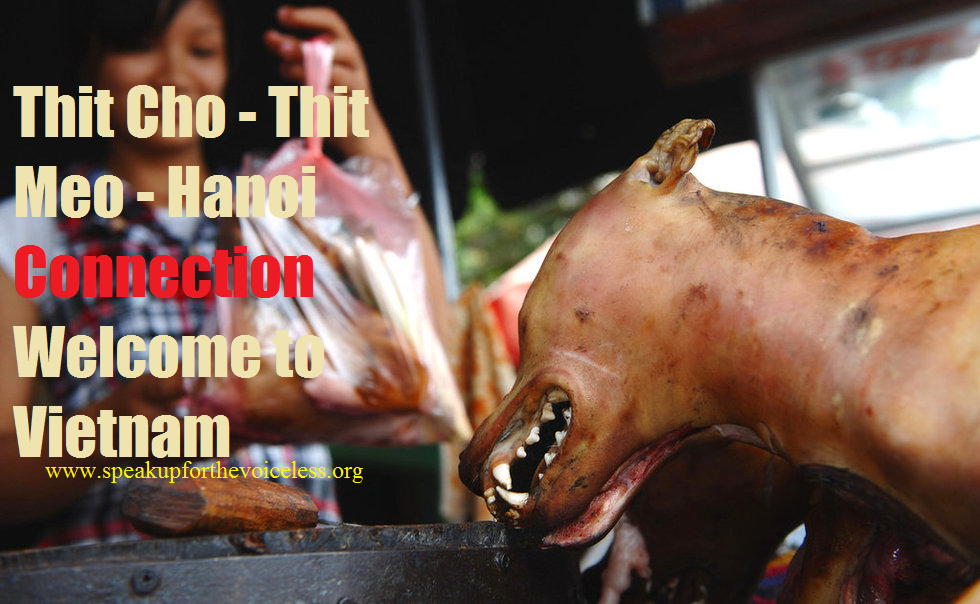 Hoang Giang, Hanoi, Vietnam. Two years ago I found myself on an assignment investigating the wildlife trade deep within Vietnam within the cites of Saigon and Hanoi. Dog meat (thit cho) and cat meat (thit meo) eaten as a prime delicacy within Vietnam is located just about on every street corner within many restaurants and street vendors. Trade is large and smuggling is big business from Thailand into Vietnam from Laos. The stench of rotting flesh and unhygienic premises is enough to turn anyone of food forever, however the true exposure of this trade must be exposed continuously and those without a voice must be heard. Welcome to Vietnam a dog and cats true nightmare a tale of barbaric, gross animal abuse and mis-justice, No animal is safe here, even the locals that do not consume the “delicacy” that own pets dare not allow their dog or cat to venture out into the streets in fear they too could be snatched by smuggling gangs thus ending up on some diners plate the next day.
Hoang Giang, Hanoi, Vietnam. Two years ago I found myself on an assignment investigating the wildlife trade deep within Vietnam within the cites of Saigon and Hanoi. Dog meat (thit cho) and cat meat (thit meo) eaten as a prime delicacy within Vietnam is located just about on every street corner within many restaurants and street vendors. Trade is large and smuggling is big business from Thailand into Vietnam from Laos. The stench of rotting flesh and unhygienic premises is enough to turn anyone of food forever, however the true exposure of this trade must be exposed continuously and those without a voice must be heard. Welcome to Vietnam a dog and cats true nightmare a tale of barbaric, gross animal abuse and mis-justice, No animal is safe here, even the locals that do not consume the “delicacy” that own pets dare not allow their dog or cat to venture out into the streets in fear they too could be snatched by smuggling gangs thus ending up on some diners plate the next day.
Please sign the petition lower down in the photo link or here. Please sign Say No To Dog Meat.Net’s second petition here.
The true horror of the Vietnamese pet meat trade is being attacked at every angle by Animal Rights Activists, Conservationists and overseas petitions calling the President of Vietnam Tru’o’ng Tan Sang to ban the trade immediately and end this horrific non-medicinal practice.
Trade History;
Every year hundreds of thousands of dogs and cats are snatched in Thailand then smuggled into Vietnam. The demand is so lucrative that stopping this trade is going to take “years” rather than months to stop. Down the leafy streets of north Hanoi’s Cau Giay district, not far from Nguyen’s family business, sits one of the city’s most famous restaurants, Quan Thit Cho Chieu Hoa, which has only one thing on the menu. There’s dog stew, served warm in a soup of blood; barbecued dog with lemongrass and ginger; steamed dog with shrimp-paste sauce; dog entrails sliced thin like sausage; and skewered dog, marinated in chilli and coriander. This is just one of a number of dogmeat restaurants in Cau Giay, but it is arguably the most revered, offering traditional dishes in a quiet setting along a canal. “I know it seems weird for me to eat here when I have my own dogs at home and would never consider eating them,” says Duc Cuong, a 29-year-old doctor, as he wraps a sliver of entrails in a basil leaf and takes a bite. “But I don’t mind eating other people’s dogs.” He swallows and clears his throat. “Dog tastes good and it’s good for you.” No one knows exactly when the Vietnamese started eating dog, but its consumption – primarily in the north – underlines a long tradition. And it is increasingly popular: activists claim up to 5 million of the animals are now eaten every year. Dog is the go-to dish for drinking parties, family reunions and special occasions. It is said to increase a man’s virility, warm the blood on cold winter nights and help provide medicinal cures, and is considered a widely available, protein-rich, healthy alternative to the pork, chicken and beef that the Vietnamese consume every day. 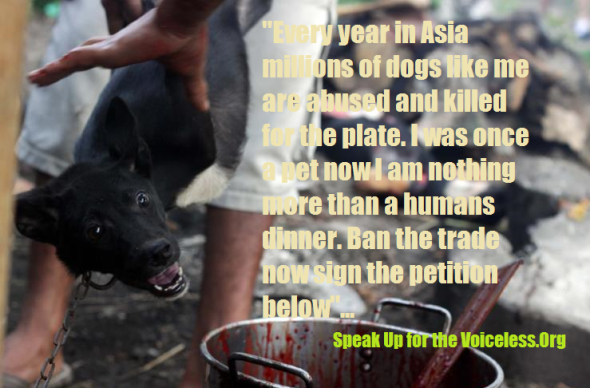
PLEASE SUPPORT SOI DOGS BY PROMOTING THE SHADOW TRADE ABOVE AND ENCOURAGING ALL MEDIA SPECIALISTS TO NOW PROMOTE - WE CANNOT SAVE EVERY SINGLE DOG BUT WE’LL DAMN WELL TRY.
As with the Rhino horn trade there is to date no proven medical literature to prove dog or cat meat holds any form of medical active properties yet people still continue to eat the meat of dog and cat. Dog and cat meat is normally consumed in the north rather than the south of Vietnam. International Animal Rescue Foundation’s Malaysian Environmental and Animal Welfare officer Arissa Lan Li questioned a trade dealer this year of which stated cats were used to protect their rice harvests from rodents. The trader then explained that cats seen then as a more good luck pet then multiplied thus causing hygiene and over populations concerns. “Cats were becoming quite an issue within the city the trader stated, so many locals then went back to dog ownership of which they used the dogs to chase feral cats away”.
Whether this is actually true we ourselves do not know, however in the north there are more paddy fields and harvests than in the south of which rice harvests are colossal and form part of Asia’s staple diet. Rice fields in Vietnam (ruộng or cánh đồng in Vietnamese) are the predominant land use in the valley of the Red River and the Mekong Delta. Dogs then became problematic in the north of which it is believed the trade in dog and cat meat then took off to control both overpopulations. Rodents adversely affect rural families in three main ways: they eat agricultural crops in the field; they eat, spoil and contaminate stored food; and they carry diseases of humans and their livestock. In the Asia–Pacific region, rodents are one of the most important constraints to agricultural production.
Management of rodent pests in agricultural regions is a high priority for reducing poverty. Arissa Lan Li questioned a dozen Vietnamese farmers of which explained more or less the same stories with regards to cats being used as rodent control. Many farmers questioned confirmed that cats then became more an issue thus seeing the introduction of dogs. Both dog and cats then became (cuisine) whilst Vietnamese locals fought hard to control over populations of both dogs, cats and rodents. According to statistics released by Binh Dinh’s Department of Agriculture and Rural Development, more than 1,000 ha of the winter-spring crops have been destroyed by rats. Evidence dating back to roughly 1969 shows that rodent control although problematic was under control however with cat meat consumption now on the rise rodents are now again taking over rice paddy fields again. 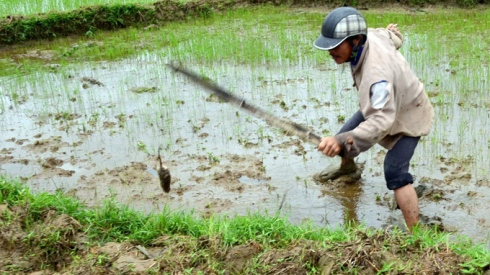 Picture above shows a Vietnam paddy farmer killing a rodent.
Picture above shows a Vietnam paddy farmer killing a rodent.
Since the reduction of cats now used in the meat trade rodent infestation has risen considerably. AFVN estimates that stray cats in rice fields kill approximately 400 mice per cat, each year and that cats do not have an adverse effect on the environment. As well as mice, rats have been infesting rice fields too. For a nation who dislikes cats, maybe cats are heaping back some revenge by in rice fields becoming overrun by rodents. Unlike western farmers that used high residual chemical rodent control - in Vietnam this was not an option due to high scale farming and harvests and the cost that surrounds “chemical” pest control. As explained we still do not know whether this is true and if a true date can actually be placed into the domain as to when the pet meat trade actually took of in Vietnam. From looking at all evidence though it appears that the pet trade within “Vietnam” being a prime example (may) have began as early as the 1950’s.
Abuse;
Some diners believe the more an animal suffers before it dies, the tastier its meat, which may explain the brutal way dogs are killed in Vietnam – usually by being bludgeoned to death with a heavy metal pipe (this can take 10 to 12 blows), having their throats slit, being stabbed in the chest with a large knife, or being burned alive. “I’ve got footage of dogs being force-fed when they get to Vietnam, a bit like foie gras,” says John Dalley, a British retire who heads the Thailand-based Soi Dog Foundation, which works to stop the dog meat trade in south-east Asia. “They shove a tube into their stomach and pump solid rice and water in them to increase their weight for sale.” Nguyen has a simpler method for bumping profits: “When we want to increase the weight, we just put a stone in the dog’s mouth.” He shrugs, before opening up his cage for another kill. 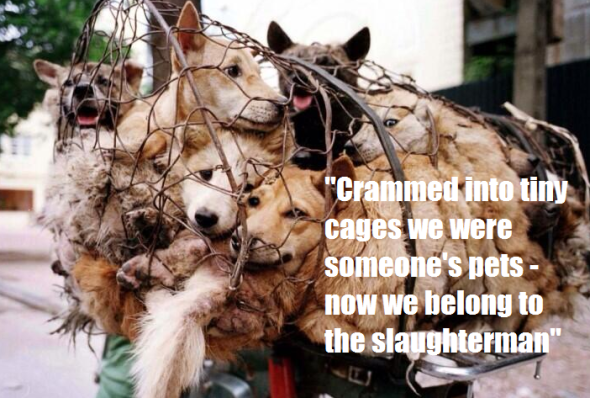 Its estimated that some 200,000 dogs are smuggled over the border from north-east Thailand into Vietnam. Its no pretty sight too, as much as 5-10 dogs can be crammed in tight wire mesh cages that then endure a hellish trip by road then river. The pain inflicted is horrific with countless dogs and cats suffering broken limbs or dying from over exposure or dehydration. When visiting Vietnam myself investigating the illegal wildlife trade seeing such sights in real life are by far more emotionally heart breaking than viewing on-line. One can shout and scream as much as one likes on-line or in the safe confines of their own home. Within dog meat markets though your emotions must be kept in tact.
Its estimated that some 200,000 dogs are smuggled over the border from north-east Thailand into Vietnam. Its no pretty sight too, as much as 5-10 dogs can be crammed in tight wire mesh cages that then endure a hellish trip by road then river. The pain inflicted is horrific with countless dogs and cats suffering broken limbs or dying from over exposure or dehydration. When visiting Vietnam myself investigating the illegal wildlife trade seeing such sights in real life are by far more emotionally heart breaking than viewing on-line. One can shout and scream as much as one likes on-line or in the safe confines of their own home. Within dog meat markets though your emotions must be kept in tact.
Dog meat traders that get a whiff of whom you are can and have attacked many investigative officers leaving them with serious injuries. When the dogs or cats arrive in Vietnam, the suffering doesn’t end there. A common belief is that stress and fear releases hormones that improve the taste of the meat, so the dogs are placed in stress cages that restrict their movement. Eventually, the dogs are either bludgeoned to death or have their throats cut in front of other dogs who are awaiting the same fate. In some cases, they’ve been known to be skinned alive. “Dogs are highly intelligent animals so if you kill a dog and you have a whole cage of dogs next to the one that’s being killed, those dogs that are going to be killed next know what’s going on,” Bendixsen said. According to animal rights groups, dog smugglers round up everything from family pets to Thailand’s ubiquitous strays — known as soi dogs — to sell the animals in Vietnam, or even as far away as China where a pedigree dog can fetch a premium price.
John Dalley of the Phuket-based Soi Dog Foundation estimates 98% of the dogs are domesticated and that some are even still wearing collars and have been trained and respond to commands. “You can see all types of pedigree animals in these captured Thai shipments — golden retrievers, long-haired terriers, you name it,” says Dalley. “Some are bought. Others are snatched from streets, temples, and even people’s gardens. “In the past, batches of stray dogs were traded for plastic buckets, but these days with demand soaring — especially in the winter months when dog meat is regarded as a “warming” food — a dog in Thailand can fetch up to $10. This figure jumps to around $60 once they are served up in restaurants in Vietnam. Dalley says pet dogs, in particular, are targeted because they are friendlier and easier to catch. Animal rights activists estimate that more than one million dogs are eaten each year in Vietnam; for the dog smugglers of the Mekong, business is booming. 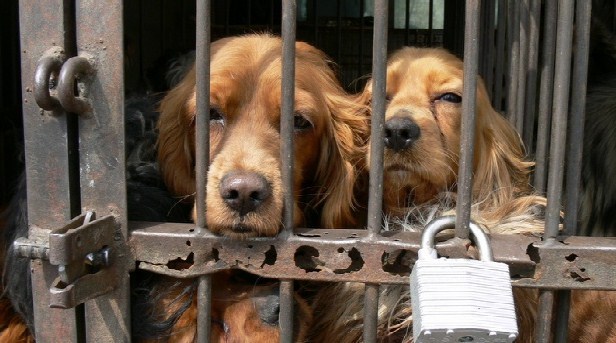 The following picture above was not taken in Vietnam but South Korea and depicts what John Dalley manager of Soi Dogs confirms with regards to pedigree dogs used in the meat trade.
The following picture above was not taken in Vietnam but South Korea and depicts what John Dalley manager of Soi Dogs confirms with regards to pedigree dogs used in the meat trade.
These two dogs are Golden Retrievers highly prized for the meat they were both a family pet. These pedigree dogs sell more than your non-pedigree of which smugglers search for on the streets in Vietnam, Thailand, Laos, South and North Korea. Pet “meat” trade may be booming in Vietnam and China however so is the bi-products of dogs. Daily Mail UK reported how dogs are also captured then killed to make GOLF GLOVES. Canine testicles are used to make these repulsive sports gloves of which demand is said to be high. ‘The skins would be bleached - some are then sent (by smugglers) to other countries to be made into gloves for playing golf,’ Lamai Sakolpitak, from a special police unit to suppress smuggling and the trade in animal parts, told AFP. But stopping what Capt Teerakiet calls a “billion-baht industry” is close to impossible under existing Thai law. It is illegal to steal domestic pets but not to round up stray dogs and pack them into cages. Animal cruelty is not banned, so a law is only actually broken when an attempt is made to smuggle the dogs out of Thailand. “On the scale of one to 10, I would say it’s a minus-one as far as the government’s concern for animal welfare goes,” said Roger Lohanan from the Thai Animal Guardians Association. As explained stopping this disgusting trade is going to take years rather than months. Pet meat consumption within Vietnam is “one” of the largest trades of non-legalised meat trade within Asia to date. Traditionalists will eat dog meat only on the lunar months while non-traditionalists will consume pet meat as a staple part of their diet. Just to give you some idea of how large this trade is I have included just a handful of (dog meat recipes) collated from authors around the globe.
Recipes include the following;
- Rựa Mận – Steamed dog meat with shrimp paste, rice flour, and lemongrass
- Giềng Me Mắm Tôm – Steamed dog in shrimp paste, galangal, and rice vinegar
- Thịt Chó Hấp – Steamed dog meat
- Thịt Chó Nướng – Grilled dog meat
- Dồi Chó – Dog sausage
- Chó Xào Sả Ớt – Fried dog in lemongrass and chili
- Canh Xáo Măng Chó – Bamboo and dog meat soup
Pet meat trade is vastly different to that of the legalised cattle meat trade. Dogs and cats are shown no mercy and as explained above are put through a brief hellish cycle of abuse, confinement and then slaughter of the most barbaric. Below is just one example of how a dog meat dish is prepared. Under no circumstances is this “food preparation” or “slaughter” even identical to that of the cattle meat trade and meat preparation. 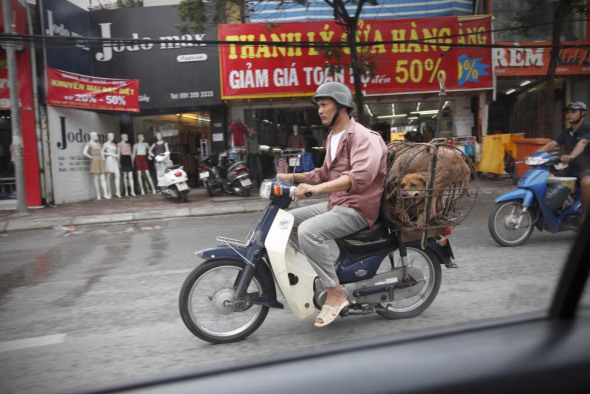
Trader and consumer;
Below is the sick - deprived and twisted method of dog slaughter and meat preparation Vietnam style straight from a street trader himself.
1. Strangle the dog from behind by surprise. Do this swiftly to prevent the dog from biting. Gag its mouth. Throw the dog in a waiting jeepney, tricycle or van. Drive as fast to avoid apprehension. When accosted though, bribe the barangay tanod or police with your crispy Php 500 bill. Should you bought the dog from a nearby area from an owner who is in dire need of money, put the dog in a sack. Carry the sack on your back.
2. Remove the dog from the sack. Tie the dog in a post. Do not hear its barks, cries and howls for dear life. Hit its head with a two-by-two inch piece of lumber with a nail at the end. Do this several times until it is dead.
3. Hang the lifeless dog on a tree branch or post upside down. Slit its throat. Place a basin underneath to catch blood. Sprinkle rice and salt on blood until it solidifies. (Blood of black dogs is a potent medicine against tuberculosis, says a folk belief in Africa.)
4. Burn the dog coat with a flame thrower. Release the lifeless dog from the post. Shave until its smooth white skin shows.
5. Slice to pieces. Wash.
6. Put the dog meat in a kawa or a big pan. Boil in vinegar for an hour.
7. Add a little water and sprinkle salt. Do not mix yet. Let it stand for a few more minutes.
8. Cook again in low, cooking fire. Add potatoes, soy sauce and sprinkle with black pepper.
9. Pour tomato sauce, tomato paste, yellow and green peas and garnish with plenty of laurel leaves.
10. Serve with plenty of ice-cold beers or gin.
Any activist that honestly believes the pet meat trade is completely identical to that of the “cattle meat trade” are very wrong. The only identical trait is that of death and even that is not quick nor clean. Below depicts what is called a “style” Michelin restaurant that is within China. Restaurants such as these are a common site all over Northern Vietnam and within Laos too. 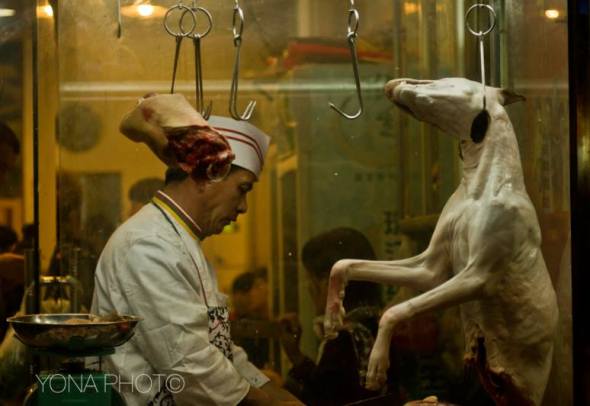 While the trade is illegal in Thailand, and authorities have made a number of raids involving thousands of dogs, dog traders claim the laws are unclear and have even mounted counter protests against a series of crackdowns. Smugglers are normally prosecuted under laws that prohibit the illegal trade and transportation of animals and, with no direct animal cruelty laws in Thailand, prosecutors attempt to charge smugglers with cruelty under Criminal Code laws. The Soi Dog Foundation and the Thai Society for the Prevention of Cruelty to Animals are fighting to change that and are currently working through the Department of Livestock Development to get an Animal Welfare Draft Law through the Thai Parliament. The reality, however, is that smugglers often receive light sentences of just a few months in jail. Animal activists also say thousands of impounded dogs — rescued from smugglers — that end up in quarantine centres sometimes find their way back onto the streets and in the dog meat circle again. “This is not about whether it is right or wrong to eat dog meat,” Dalley says. “It is about an illegal trade worth millions of dollars per year organized by criminals. The way in which these dogs are transported and, if they survive, killed, is horrific. “Some of the footage we receive is so horrific it’s too strong even for the media to run. It’s so inhumane … it’s quite literally hell on earth.”
While the trade is illegal in Thailand, and authorities have made a number of raids involving thousands of dogs, dog traders claim the laws are unclear and have even mounted counter protests against a series of crackdowns. Smugglers are normally prosecuted under laws that prohibit the illegal trade and transportation of animals and, with no direct animal cruelty laws in Thailand, prosecutors attempt to charge smugglers with cruelty under Criminal Code laws. The Soi Dog Foundation and the Thai Society for the Prevention of Cruelty to Animals are fighting to change that and are currently working through the Department of Livestock Development to get an Animal Welfare Draft Law through the Thai Parliament. The reality, however, is that smugglers often receive light sentences of just a few months in jail. Animal activists also say thousands of impounded dogs — rescued from smugglers — that end up in quarantine centres sometimes find their way back onto the streets and in the dog meat circle again. “This is not about whether it is right or wrong to eat dog meat,” Dalley says. “It is about an illegal trade worth millions of dollars per year organized by criminals. The way in which these dogs are transported and, if they survive, killed, is horrific. “Some of the footage we receive is so horrific it’s too strong even for the media to run. It’s so inhumane … it’s quite literally hell on earth.”
Cat meat horror - Vietnam; 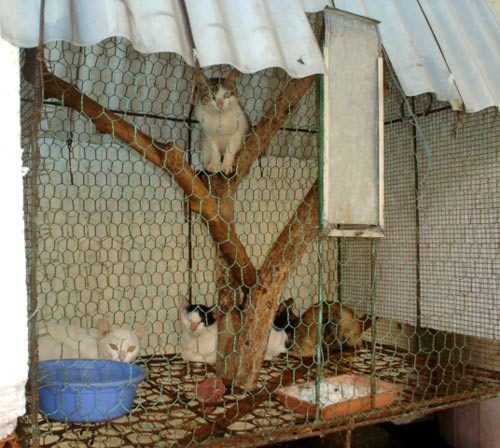 Picture above depicts a typical cat meat diner within Vietnam of which some 100,000 cats are annually butchered. Back in 2011 many Vietnamese indulged on cat meat being “year of the cat” cats really did suffer a horrific amount of abuse. Like eating dog meat, cat meat is considered a part of the country’s traditional cuisine.
Picture above depicts a typical cat meat diner within Vietnam of which some 100,000 cats are annually butchered. Back in 2011 many Vietnamese indulged on cat meat being “year of the cat” cats really did suffer a horrific amount of abuse. Like eating dog meat, cat meat is considered a part of the country’s traditional cuisine.
Groups of men (more so than women), seated on mats spend their evenings sharing plates of dog/cat meat and drinking alcohol since the meat is believed to raise libido. It is also said to bring luck and good fortune. Some restaurants in Hai Phong and Ha Long Bay even advertise cat meat hot pot as “little tiger”, and cats in cages can be seen meowing away in their cramped and filthy cages. However, Vietnamese aren’t the only ones eating man’s best friend or furry feline, some visitors to the country also enjoy the novelty of tasting and saying, Say No To Dog Meat.Net have documented on many Americans, Canadians, Aussies and Europeans not only liking the food torture but creating on-line cook books and media showing promoting the trade whilst activists and conservationists are trying to end this grisly food delicacy (please see video below).
Please feel free to “educate these irresponsible tourists here”
The good news is that recent Vietnamese opinion polls (2011 - 2012)– where animal welfare is a relatively new concept – suggest that the consumption of dogs and cats is losing popularity, especially with the younger generation. Although the consumption of cats increased from 2012, the big picture suggests that eating dogs and cats is slowly beginning to decline as Vietnam clamours to become an international country and aspires to rise to first-world standards. Cats are considered “little tigers” so eating them in Vietnam is supposed to give you the strength of a tiger. Again there is no evidence to even back such claims/beliefs up. 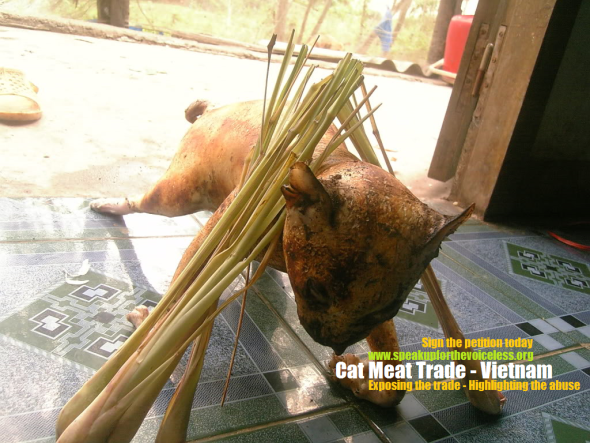 Say No To Dog Meat.Net quoted; By the time smuggled cats or dogs arrive in Vietnam, many have already died and almost all the barely surviving animals are covered in faeces and urine, as well as riddled with diseases, such as rabies. Dog and cat meat trade workers have high incidents of rabies, as they man-handle the animals, loading, unloading and brutally slaughtering them. In the northern province of Quang Ninh, Vietnam, authorities seized over 4,000 kilograms of live cats and cat meat last year, which had been smuggled into Vietnam. Provincial authorities said once the animals are smuggled in by boat at night, they are divided into smaller batches and delivered to restaurants and markets. To avoid detection, cat smugglers have begun killing cats before sneaking 50 kilogram packages of dead cats onto Vietnamese land. Nguyen Dang Truong, chief market manager of Quang Ninh Province, said cat smuggling from China is not new, but the illegal practice has never been carried out on such a large scale. The following is an excerpt from the Vietnamese Labourer News which details dog and cat parasitic worms that are a serious health threat to people who eat cats and dogs: “While both cats and dogs carry ascaris, a parasitic nematode worm that can grow in the human brain, liver and other internal organs, cats are the primary hosts of Toxoplasmosis gondii, a parasitic organism that can cause encephalitis (inflammation of the brain) and other neurological diseases.” “It can also affect the heart, liver, inner ears, and eyes. It can be fatal for people with weakened immune systems such as AIDS patients and pregnant women” “Cats also carry agents that can cause fungal skin diseases, typhoid fever, diarrhoea, and potentially fatal blood poisoning, they said, noting that infections are caused during digestion or through open wounds exposed to the slaughtering process.”
Say No To Dog Meat.Net quoted; By the time smuggled cats or dogs arrive in Vietnam, many have already died and almost all the barely surviving animals are covered in faeces and urine, as well as riddled with diseases, such as rabies. Dog and cat meat trade workers have high incidents of rabies, as they man-handle the animals, loading, unloading and brutally slaughtering them. In the northern province of Quang Ninh, Vietnam, authorities seized over 4,000 kilograms of live cats and cat meat last year, which had been smuggled into Vietnam. Provincial authorities said once the animals are smuggled in by boat at night, they are divided into smaller batches and delivered to restaurants and markets. To avoid detection, cat smugglers have begun killing cats before sneaking 50 kilogram packages of dead cats onto Vietnamese land. Nguyen Dang Truong, chief market manager of Quang Ninh Province, said cat smuggling from China is not new, but the illegal practice has never been carried out on such a large scale. The following is an excerpt from the Vietnamese Labourer News which details dog and cat parasitic worms that are a serious health threat to people who eat cats and dogs: “While both cats and dogs carry ascaris, a parasitic nematode worm that can grow in the human brain, liver and other internal organs, cats are the primary hosts of Toxoplasmosis gondii, a parasitic organism that can cause encephalitis (inflammation of the brain) and other neurological diseases.” “It can also affect the heart, liver, inner ears, and eyes. It can be fatal for people with weakened immune systems such as AIDS patients and pregnant women” “Cats also carry agents that can cause fungal skin diseases, typhoid fever, diarrhoea, and potentially fatal blood poisoning, they said, noting that infections are caused during digestion or through open wounds exposed to the slaughtering process.” 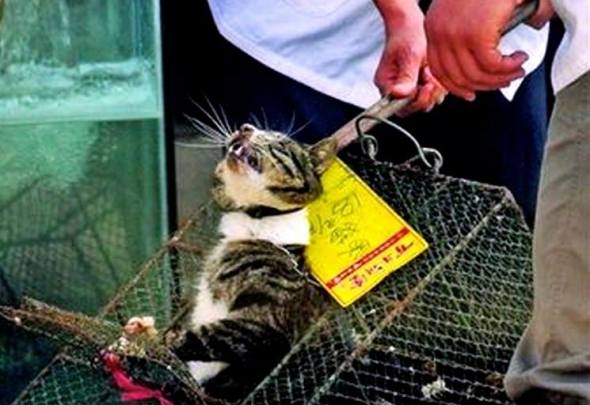 BACK IN MARCH 2014 - Thai police intercepted a pickup truck with six plastic cages filled with 90 cats in Nakhon Phanom Province in Thailand, on their way to Laos. The cats were ultimately destined for the tables of Vietnam, although the same trade exists even to a greater extent in China. The driver said he was paid approximately $65 to deliver the cats to a middleman on the Mekong River which marks the border between Thailand and Laos, and the middleman would transport them to Vietnam where they fetch high prices for their meat. The driver was charged with cruelty to animals and transporting livestock without a proper health check or permit, and the cats were sent to a quarantine station. Thai police believe this first case relating to cat smuggling for meat, is almost certainly linked to a local gang involved in smuggling dogs to Vietnam. Usually the perpetrators are lightly fined, released and try again another day.
BACK IN MARCH 2014 - Thai police intercepted a pickup truck with six plastic cages filled with 90 cats in Nakhon Phanom Province in Thailand, on their way to Laos. The cats were ultimately destined for the tables of Vietnam, although the same trade exists even to a greater extent in China. The driver said he was paid approximately $65 to deliver the cats to a middleman on the Mekong River which marks the border between Thailand and Laos, and the middleman would transport them to Vietnam where they fetch high prices for their meat. The driver was charged with cruelty to animals and transporting livestock without a proper health check or permit, and the cats were sent to a quarantine station. Thai police believe this first case relating to cat smuggling for meat, is almost certainly linked to a local gang involved in smuggling dogs to Vietnam. Usually the perpetrators are lightly fined, released and try again another day.
Public Fight Back; 2010-2014 we have seen quite a rise in public backlash both in China and Vietnam of which dog meat thief’s have been caught red handed of which subsequently were either beaten black and blue by angry baying crowds or recently within Vietnam three dog thief’s were beaten to death by angry locals. Whilst we do not support mob justice or violence we will copy the story here for you to read. International Animal Rescue Foundation, Say No To Dog Meat.Net and Speak Up for the Voiceless denounces all forms of violence. We ask all members of the public not to take the law into your own hands like those did (2010) within Vietnam. Sadly the mob that beat the dog meat traders to death were sentenced to three years in prison. This matter could have been handled differently however clearly shows the sheer frustration and anger that is now brewing within Asia. 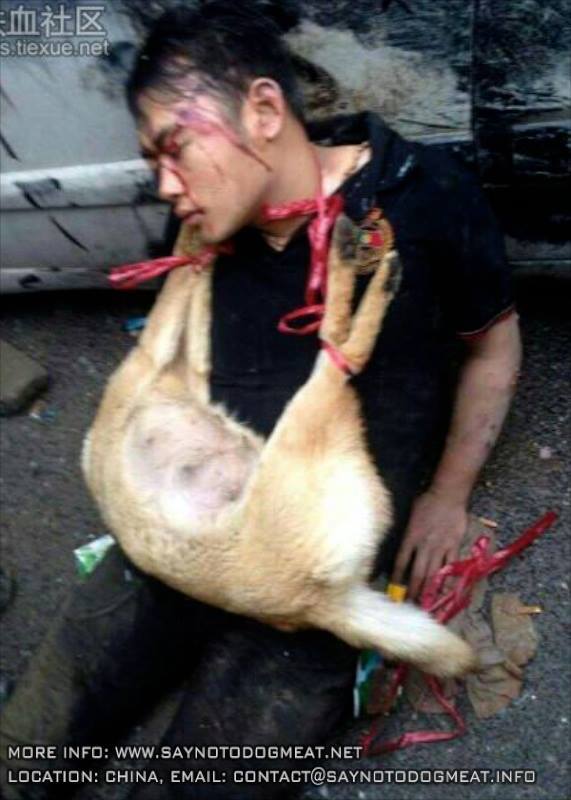
The story can be read hereto;
On June 10, Colonel Le Xuan Diep - Yen Thanh district police chief - said the incident occurred at around 5:30 am the same day in Village 3 of Tan Thanh commune, Yen Thanh district, Nghe An province. At the time, two dog thieves from Dien Lam commune, Dien Chau district drove a motorcycle to Village 3 of Tan Thanh commune to catch dogs. Several villagers detected the thieves after they caught a dog and put the animal into a sack. These people shouted to alarm others and chased after the thieves. Thousands of people flocked to the road to catch the thieves. The thieves were blocked and caught on the village road. After catching the thieves, hundreds of people beat them. Local police tried to rescue the thieves from angry people but they were prevented by extremists. It took them a long time to take the thieves to the hospital. Their motorcycle was burnt down. A thief died at 12.30pm in hospital while the remaining was seriously injured, said Colonel Le Xuan Diep. The case is being investigated by Yen Thanh district police. This is not the first time a dog thief was beaten to death. - Police later confirmed that ten people were sentenced to three years incarceration. Back in April 2014 the same more or less mob justice was inflicted in dog meat traders by baying angry crowds, this time in China. Two Chinese men were brutally beaten by villagers near Guilin city, after being caught stealing dogs for meat, reports The Daily Mail. The pair were caught stealing pets to sell for meat in restaurants. A villager caught the men in the act as they were stealing his dog–shortly after the thieves were bloodily beaten by the villager and his neighbors. The pair were dragged out of their car, beaten with bricks and bats. The car was heavily damaged by rocks as well. The thieves’ car contained three more dead, drugged dogs in the back of their trunk, which caused an even angrier and larger group of attackers, reports Jianxi Daily. Even though the two men were heavily injured, the Sanjiang villagers refused to give-up the dog thieves to the police officers. Instead, they continued to parade them through the streets and demanded a guarantee that they would get compensation for their dead animals. They demanded 50,000 RMB. Picture below depicts Chinese dog killers/traders handed down some rough justice from baying mobs;
Video below shows just how mob justice is dished out in Vietnam. Dog meat thief was in their eyes “taught a lesson”. Please note we do not support acts of violence against anyone or any living being.
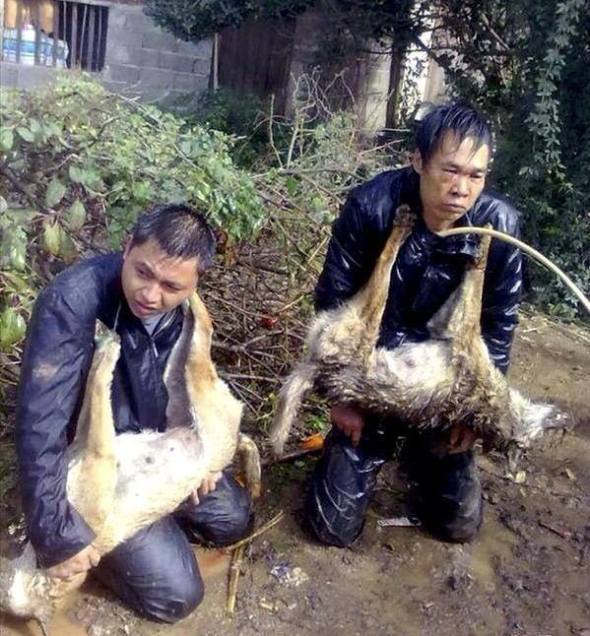 According to the Guilin City police report, the thieves would drive into small villages, listening for dogs barking and looking for unattended pets. After finding a decent sized animal, they would throw a peace of pre-drugged meat to the dog, after the drug took hold they would pick up the dog, hit it over the head in order to kill it, and put the carcass in the back of their car. Later they would sell the meat to restaurants and cafes. The situation was resolved only after the families of the two brutally beaten men turned up offering apologies, and promised to pay the compensation for the pets as requested.
According to the Guilin City police report, the thieves would drive into small villages, listening for dogs barking and looking for unattended pets. After finding a decent sized animal, they would throw a peace of pre-drugged meat to the dog, after the drug took hold they would pick up the dog, hit it over the head in order to kill it, and put the carcass in the back of their car. Later they would sell the meat to restaurants and cafes. The situation was resolved only after the families of the two brutally beaten men turned up offering apologies, and promised to pay the compensation for the pets as requested.
Pain;
Dogs and cats in pain often are quieter and attempt to hide and avoid contact with other dogs, cats and people. This behaviour can also include agitation and fear biting. These types of behaviours are general indicators of pain. The myth that dogs and cats do not feel pain is false. Viewing some of the animals on my trips to Vietnam crying and barking loudly, others sitting in sheer shock or depressed is surely a unique sign that the Vietnamese government must now put a bloody end to this gruesome and unethical food torture trade. Vocalization, if it is not a normal behaviour for the dog, can be a sign of pain. The sounds from the dog for example can be more subtle such as whining or even moaning. Injuries or pain to the legs can cause the dog to limp or have an altered way of walking. The dog will often react if the point of the injury is touched. In some cases the reaction can be violent. Many dogs transported in such small cramped cages often end up with broken limbs however are left to suffer. 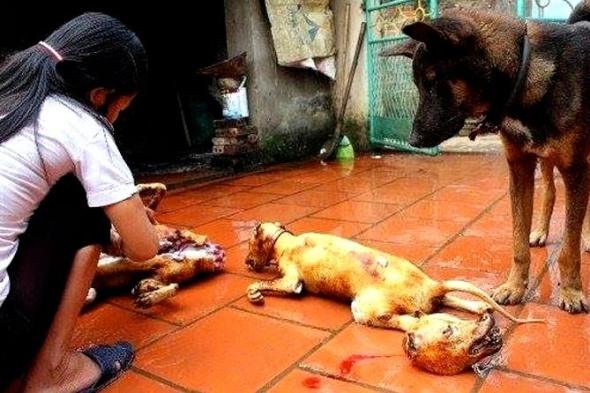 This is a violation of International law yet the trade still continues, dogs and cats suffer no matter what pain is inflicted to them during the process of capture and transportation. All the trader wants is money and while the consumer buys the demand increases. Many dogs within the meat trade will exhibit a lack of appetite while in pain. Even dogs in pain need nutrition however there is no such treatment given - after all there lives are not really important and are killed within hours or days. Any nutrition provided is forced using a steel or plastic tube rammed down the dogs throat of which the dog is then force fed to fatten the animal up. Hardly caring is it? Dogs in pain will show an increase in both breathing and heart rate. A normal heart rate for small dogs or puppies is between 120 and 160 beats per minute. The larger the dog the slower the heart rate, with some large dogs having a pulse of about 60 beats per minute. Normal respiration for a dog at rest is between 10 and 30 breaths per minute. Whilst we know this then we must continue to fight to ban the pet meat trade within Vietnam. Laws must be adopted, traders and traffickers arrested and farms closed down. There is no if’s nor buts the trade must end while there is vast evidence in the domain to prove there is no such medicinal properties within the meat of both dogs and cats, and pain is no myth either.
This is a violation of International law yet the trade still continues, dogs and cats suffer no matter what pain is inflicted to them during the process of capture and transportation. All the trader wants is money and while the consumer buys the demand increases. Many dogs within the meat trade will exhibit a lack of appetite while in pain. Even dogs in pain need nutrition however there is no such treatment given - after all there lives are not really important and are killed within hours or days. Any nutrition provided is forced using a steel or plastic tube rammed down the dogs throat of which the dog is then force fed to fatten the animal up. Hardly caring is it? Dogs in pain will show an increase in both breathing and heart rate. A normal heart rate for small dogs or puppies is between 120 and 160 beats per minute. The larger the dog the slower the heart rate, with some large dogs having a pulse of about 60 beats per minute. Normal respiration for a dog at rest is between 10 and 30 breaths per minute. Whilst we know this then we must continue to fight to ban the pet meat trade within Vietnam. Laws must be adopted, traders and traffickers arrested and farms closed down. There is no if’s nor buts the trade must end while there is vast evidence in the domain to prove there is no such medicinal properties within the meat of both dogs and cats, and pain is no myth either.
Dogs are routinely snatched within Vietnam by traffickers or opportunistic snatchers. Please view the video below.
Concluding;
The pet meat trade whether in Asia or Africa must come to an end. The only identical trait to both the cattle meat trade and the pet meat trade is that of death. However the brutal deaths, trafficking and abuse is non-identical to that of cattle within the “regulated meat industry”. Evidence past and present clearly shows there is potential for diseases and new virus’s to emerge of which talking Africa for example has already began. Ebola Haemorrhagic Fever although not directly related to dogs, evidence from the World Health Organisation and Scientific Bodies have shown the Ebola virus can be passed from dog to human. Dogs act as a host animal. Within West Africa dogs are mainly strays that wander the dense forest and rural communities in search of foods. When coming in to contact with carrion that is infested with Ebola the animal can then carry this directly into a community. Dogs that then come into contact with humans of which have blood on their fur, noses or mouths can then easily pass the virus on resulting in a very short but extremely painful death with only 10% of Ebola victims actually surviving. There is no treatment nor any cure and should for example any Ebola victim travel out of Africa into Europe or America within the incubation period the possible for disease outbreak is worrying. Fortunately this has yet to happen.
Please read more here for further information. https://speakupforthevoiceless.org/2014/04/02/dog-meat-trade-ebola/ and here http://saynotodogmeat.net/food-hygiene-disease/
International Animal Rescue Foundation Africa and Asia, Speak Up for the Voiceless and Say No To Dog Meat.Net are currently lobbying the Vietnamese and Thailand Government calling for the pet meat trade to be firmly banned. You can join us in our’s and others quests to kill the trade by signing and sharing the petitions below. We politely ask too that you lobby any film production companies that you know to highlight and show in full the Soi Dog Shadow Trade of which the film is listed above.
Thank you for taking the time to read.
Chief Environmental Officer Malaysia
Chief Environmental and Botanical Officer Africa
Chief Executive Officer
International Animal Rescue Foundation is not a charity however will from time based on animal and environmental needs lobby the public for both verbal and finical support of which is 100% regulated and legitimate. Speak Up for the Voiceless our main Animal and Environmental News Column and Environmental News and Media are part and parcel to our legitimate environmental company that undertake ground investigations and publish news within the Animal Rights and Environmental Activism domain. Say No To Dog Meat.Net is run by our Environmental Officer and that of Donna Armes and Ms Brown. Say No To Dog Meat.Net has no affiliation with the British Charity World Protection for Cats and Dogs in the Meat Trade or its campaign No To Dog Meat. For further information on how you can help us or just to speak to one of our team or if you have any concerns you’d like to submit or raise please feel free to email us here at - [email protected] or [email protected] We do exactly what it says on the tin and take great pride in our work both at ground level or on-line.

